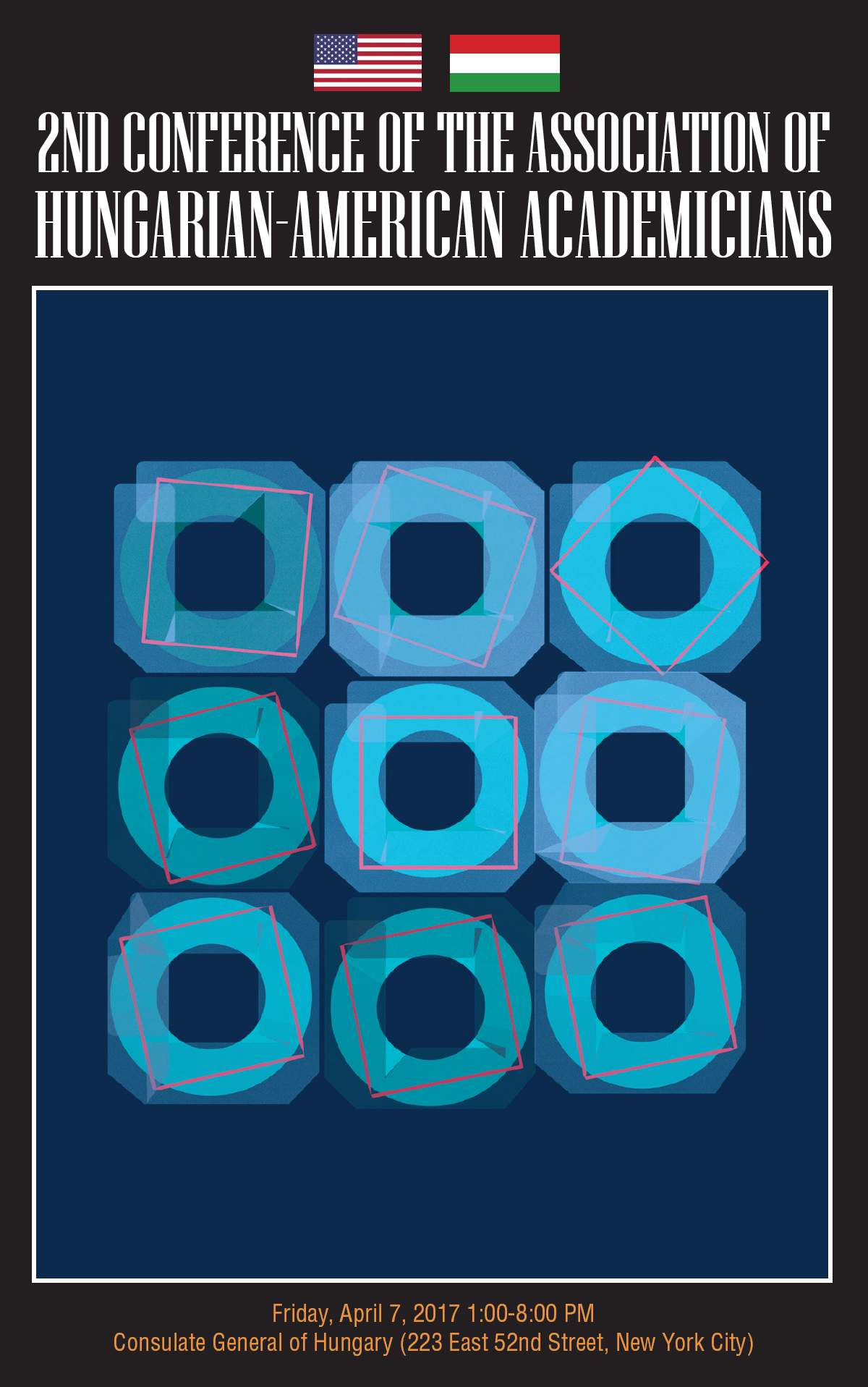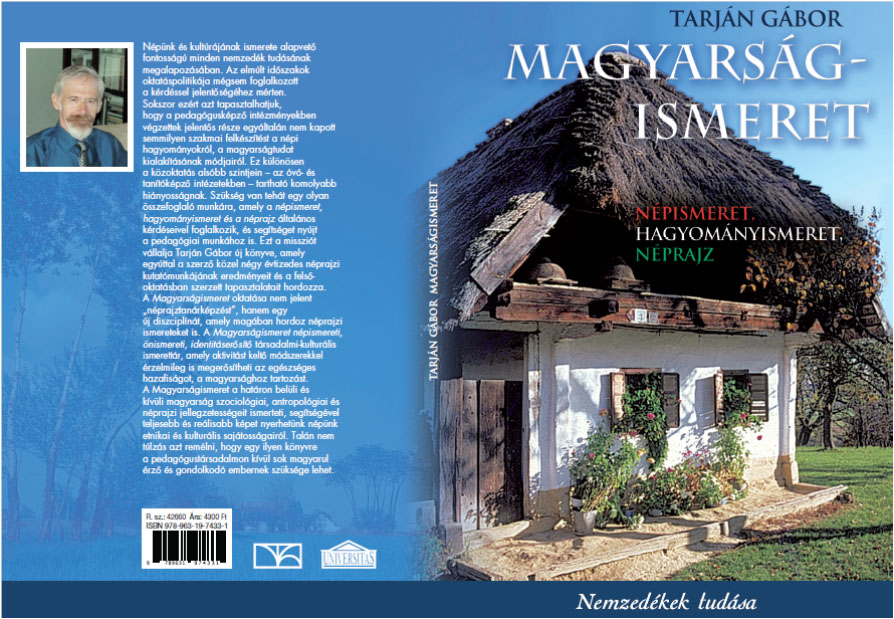Tuesday, November 28th, 2017
Media in the 21st (Digital) Century
by Prof. Miklós Sárváry, PhD, Columbia Business School
and
Wherein lies the Public Interest
by Bernat Ivancsics, PhD candidate , Colubia Journalism School
6:30-7:00 reception 7:00-8:00 presentations and discussion Consulate General of Hungary (227 East 52nd Street, New York City) Suggested donation 20 USD All donations benefit the NYHSSThursday November 9th, 2017
New Discoveries in the Science of Astrophysics:
Why Do They Matter for Science and for Everyone
a panel discussion by distinguished researchers Peter Levai (director general of Wigner Research Centre for Physics, Hungary) Szabolcs Marka (associate professor, Department of Astronomy, Columbia University) Zsuzsanna Marka (associate research scientist, Columbia University Moderator: Gabor Takacs-Carvalho (science and technology attaché of Hungary)6:30-7:00 reception 7:00-8:00 panel discussion
Consulate General of Hungary (227 East 52nd Street, New York City) Kindly R.S.V.P before November 8th Suggested donation 20 USD All donations benefit the NYHSS
Thursday May 25th, 2017
THE AMERICAN DREAM: JOSEPH PULITZER - THE MAN BEHIND A LEGEND
by Dr. Péter Fónyad Joseph PULITZER was born in Mako, Hungary, in 1847 and died in the US, in 1911. Many people know of the Pulitzer Prize but who is the man behind the prize? He was a Hungarian-American newspaper publisher at the St. Louis Post Dispatch and the New York World. In 1864, at the age of 17, Pulitzer arrived in America to fight in the Civil War, without a penny in his pocket or without knowing a word of English. After many years of begging, he fought his way up to become one of the richest and most influential men in America. He created modern journalism and fought for freedom of the press and democracy. Pulitzer crusaded against big business and corruption. The Columbia School of Journalism was founded from his donation. Pulitzer helped set the pattern of the modern newspaper and created a journalistic style that is still used today. He helped in keeping the Statue of Liberty in New York and founded the prestigious Pulitzer Prizes which were first awarded in 1917. About the speaker: Dr. Péter FÓNYAD Dr Fónyad was born in Hungary, in 1941. After high school and technical school, he worked a few years as an engineer until in 1967, he escaped from socialist Hungary to Vienna. In 1968 he moved to Stockholm, Sweden received his medical degree at Karolinska Institute in Stockholm. He worked as a medical doctor in several hospitals in Stockholm and as a doctor for the Swedish government, until he retired at 70. Dr Fónyad remained active after retirement and he is extensively studying the role of Hungarians in the American Civil War.Friday April 7th, 2017
Consulate General of Hungary (227 East 52nd Street, New York City)
1:00-6:30 pm scientific session
Dinner 7:30-09:30 pm
Lecture ( 8:00 pm) by Tamas Freund, Vice-President
Hungarian Academy of Sciences
Our inner world- enriched by arts-stimulates learning, memory, creativity
Program (download)
Economics
1:-1:20 Acs Zoltan, George Mason University: The Digital Entrepreneurial Ecosystem
Mathematical, Physical and Earth Sciences
1:20-1:40 Tardos Eva, Cornell University: Selfish Routing and the Price of Anarchy
1:40-2:00 Bartos Imre, Columbia University*: Black Holes and Gravitational Waves
2:00-2:20 Meszaros Peter, Pennsylvania State University: Black Holes, Cosmic Rays and Neutrinos: Messengers from the Deep Universe
2:20-2:40 Porkolab Miklos, MIT: Demonstrating the Scientific Feasibility of Fusion Energy: a Grand Challenge in Science and Technology
2:40-3:00 Sztipanovits Janos, Vanderbilt University: Cyber-Physical Systems
3:00-3:20Huszar Rudolf, Washington University: Atmospheric Aerosols in the Earth System
Coffee Break
Medical Sciences
3:40-4:00 Mezey Eva, NIH: Therapeutic Use of Human Bone Marrow Cells to Modulate the Immune System
4:00-4:20 Szabo Sandor, UC, Irvine, New Molecular and Cellular Elements in Ulcer Pathogenesis and Healing
4:20-4:40 Tigyi J. Gabor, University of Tennessee: Prevention of Cancer Metastasis by Targeting the Stroma
4:40-5:00 Nagy-Szakal Dorottya, Columbia University: The Mind-Blowing Microbiome: the Role of Gut Microbes in Colonic Inflammation and Gut-Brain Axis
Coffee Break
Biology, Neurobiology and Neurology
5:20-5:40 Maliga Pal, Rutgers University*: The Promise of Synthetic Biology in Plants
540-6:00 Bodis-Wollner Ivan, State University of NY*: Retineal clues to the pathophysiology of Parkinson’s disease
6:-6:20 Mody Istvan, UCLA: The Other Side of Optogenetics: Fast and Reliable Detection of Neuronal Membrane Potential Changes with Light
6:20-6:40 Zaborszky Laszlo, Rutgers University*: How and What Tells Anatomy about Brain Function?
7:30-9:30 Dinner
FREUND Tamas, Vice President HAS: Our inner world- enriched by arts-stimulates learning, memory, creativity
CELEBRATE THE 5th ANIVERSARY of the NYHSS - October 28, 2016 (more details)
Welcome speech
H.E. Ambassador Ferenc KUMIN, PHD – consul general of Hungary
Past, present and future of NYHSS
Laszlo Zaborszky, President
Zsofia Trombitas, Founding Secretary
Janos Bergou , Past President
Friends of Hungary: Hungarian scientist all over the world
Professor E. Sylvester Vizi, former president of the Hungarian Academy os Sciences, president of the Society for Dissemination of Scientific Knowledge
What the human eye does not tell the human brain
Professor Ivan Bodis-Wollner, director of Parkinson’s Disease and Related Disorders Clinic Center of Excellence , SUNY
Ambassador Ferenc Kumin, PhD - Consul General of Hungary and Laszlo Zaborszky, MD,PhD - President of the New York Hungarian Scientific Society request the pleasure of your company at the 2nd Fundraising Gala and Dinner of the New York Hungarian Scientific Society on Tuesday, December 13th, 2016 at 6:30 p.m. To make this event special, Professor Albert-László Barabási, Robert Gray Dodge Professor of Network Science and a Distinguished University Professor at Northeastern University, director of the Center for Complex Network Research will give a lecture on The Science of Success?
A dinner with Hungarian regional wines and delicacies will be served to the generous donors supporting the NYHSS. During the dinner, the donors will hear from the 2015 winners of the Albert Szent-Györgyi Young Investigator Prize and the 2016 winners will be announced. - December 13th, 2016 (more details)
„Big Science and Big Data in a Small Country” on how a small country like Hungary can contribute to groundbreaking scientific achievements by providing critical big data capabilities by Professor Péter Lévai (director general of MTA Wigner Research Centre for Physics) and “Sequence and structure relationships in the cadherin protein family” By Klára Felsővályi (research director of GeneCentrix) - November 3th, 2016 (more details)
„The Promise of Synthetic Biology in Plants” on how can we engineer photosynthetic machinery in plants to increase crop productivity by Pal Maliga (Rutgers University, Waksman Institute of Microbiology) - October 4th, 2016 (more details)
'Synthetic biology: A new approach to biology and medicine' by Gábor BALÁZSI (Stony Brook University, NY) - June 14th, 2016 (more details)

„Follow your Gut” on the relationship between nutrition habits in our early years, microbiome alteration and gastrointestinal disorders by Dorottya Nagy-Szakál
and
”Safer and Natural Pain Reliever from a Tree?” on new discoveries of effective and natural pain reliever found in a Southeast Asian plant that has the potential to be an alternative to morphine with fewer side effects by -András Váradi - May 24, 2016 (more details)
„Brain Health- Dementia Prevention” A review of recent research on what can we do to reduce the risk of Alzheimer and other brain disorders – focusing on lifestyle environmental changes. by -Alexandra Krisztofer - Aprl 28, 2016 (more details)

How Astronoy Grew Its Ears - Detection of Gravitational Waves by Zsuzsa Márka- March 23, 2016 (more details)

The Soviet agronomer, Lysenko., charlatan or scientist, then and now. by Miklós Müller - February 23, 2016 (more details)

Fundraising Gala and Dinner on Wednesday, December 9th, 2015
Professor György Buzsáki, M.D., Ph.D., Biggs Professor of Neuroscience, NYU School of Medicine, external member of the Hungarian Academy of Sciences and winner of the European Brain Prize will give a lecture on How do we remember? (more details)

György Buzsáki, M.D., Ph.D.
György Buzsáki is Biggs Professor of Neuroscience at New York University. His primary interests are mechanisms of memory, sleep and associated diseases. His main focus is “neural syntax”, i.e., how segmentation of neural information is organized by the numerous brain rhythms to support cognitive functions. His most influential work, the two-stage model of memory trace consolidation, demonstrates how the neocortex-mediated information during learning transiently modifies hippocampal networks, followed by reactivation and consolidation of these memory traces during sleep. With more than 300 papers published on these topics, he is among the top 1% most-cited neuroscientists. Buzsáki is a Fellow of the American Association for the Advancement of Science and the Academiae Europaeae and an honorary member of the Hungarian Academy of Sciences, and he sits on the editorial boards of several leading neuroscience journals, including Science and Neuron. He is a co-recipient of the 2011 Brain Prize. (Book: G. Buzsáki, Rhythms of the Brain, Oxford University Press, 2006)
CELEBRATE THE 5th ANIVERSARY of the NYHSS - October 28, 2015 (more details)
Welcome speech
H.E. Ambassador Ferenc KUMIN, PHD – consul general of Hungary
Past, present and future of NYHSS
Laszlo Zaborszky, President
Zsofia Trombitas, Founding Secretary
Janos Bergou , Past President
Friends of Hungary: Hungarian scientist all over the world
Professor E. Sylvester Vizi, former president of the Hungarian Academy os Sciences, president of the Society for Dissemination of Scientific Knowledge
What the human eye does not tell the human brain
Professor Ivan Bodis-Wollner, director of Parkinson’s Disease and Related Disorders Clinic Center of Excellence , SUNY
„Budapest Scientific: A Guidebook” Oxford University Press, UK, 2015 by István Hargittai and Magdolna Hargittai - October 5, 2015 (more details)
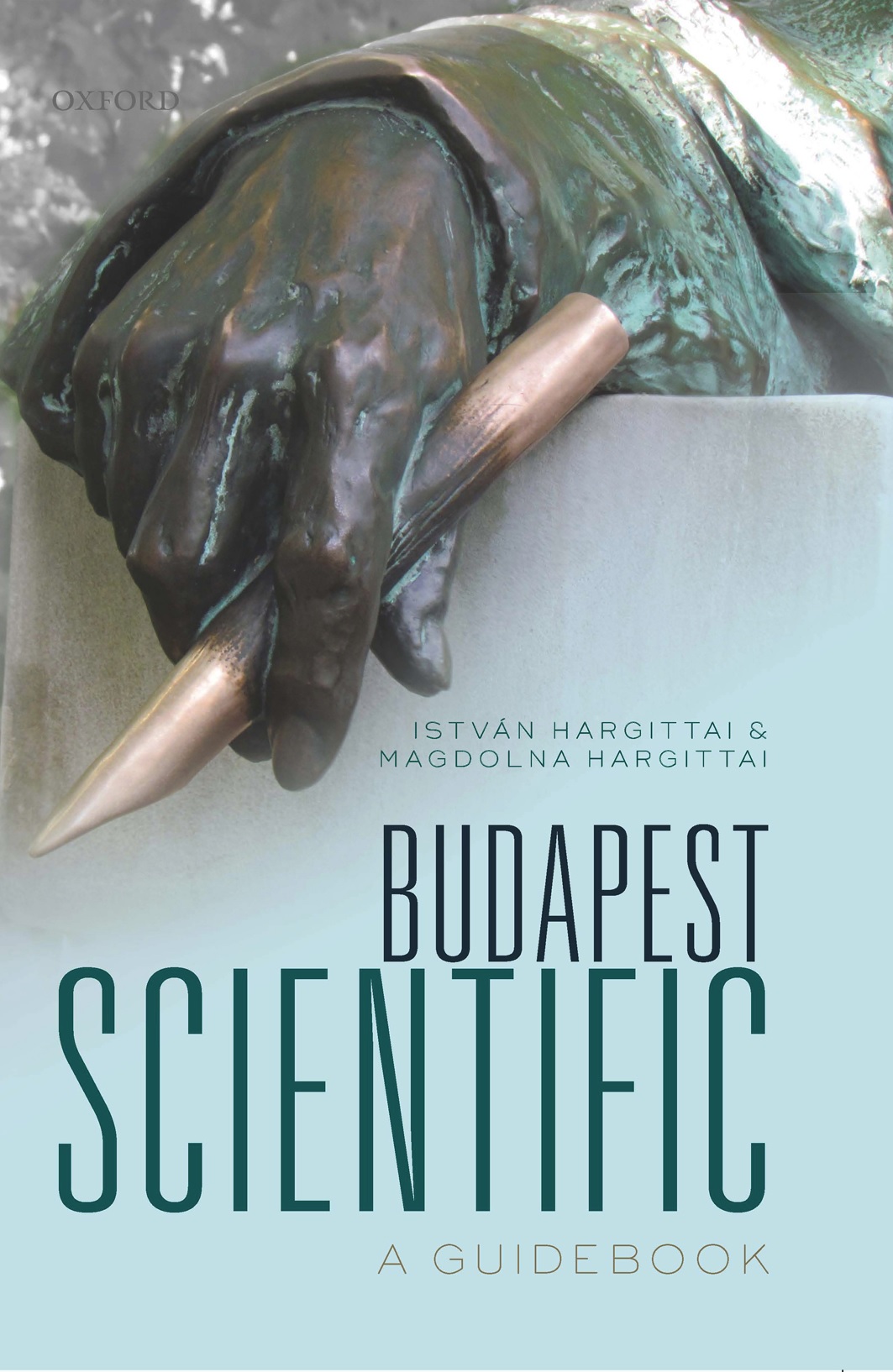
„Edith A. Zang, Ph.D: The Role of Statistics in Pharmaceutical Drug Discovery and Development, - September 15, 2015 (more details)
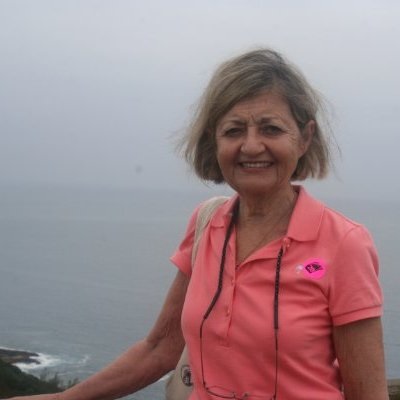
„Ferenc Molnar: His life and works” by Professor Elizabeth Molnar Rajec PhD, - June 2, 2015 (more details)
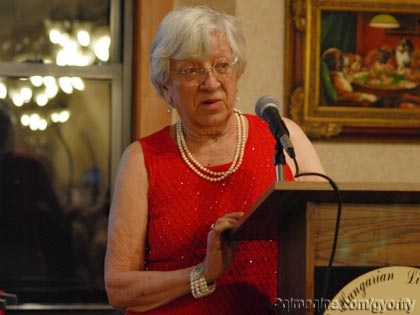
„Dawkins’ Dilemmas: Trouble for the World’’s Most Famous Atheist?” by David Seiple M.T. S, Ph.D., - May 26, 2015 (more details)
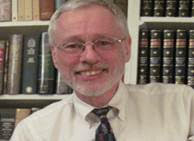
„50 years of graph theory: the networks by which we are all connected” by László Lovász, - April 21, 2015 (more details)
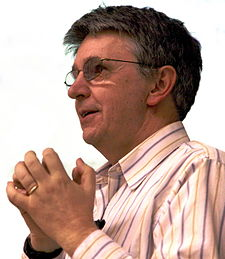
„Neural mechanisms for discovering casual structure in traumatic environments” by Tamás Madarász, - April 8, 2015 (more details)
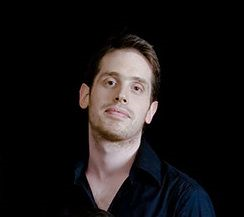
„Antibiotic resistant bacteria in New York, origin of a resistance gene and spread of resistant clones of MRSA” by Alexander Tomasz PhD, - March 10, 2015 (more details)

-------------------------------------------------------------------------------------------------------------------------
„Population decline: Problems and countermeasures” by Prof. Paul Demeny, - December 9, 2014 (more details)
-------------------------------------------------------------------------------------------------------------------------
„The Antimatter” by Prof. Dezső Horváth, - October 17, 2014 (more details)
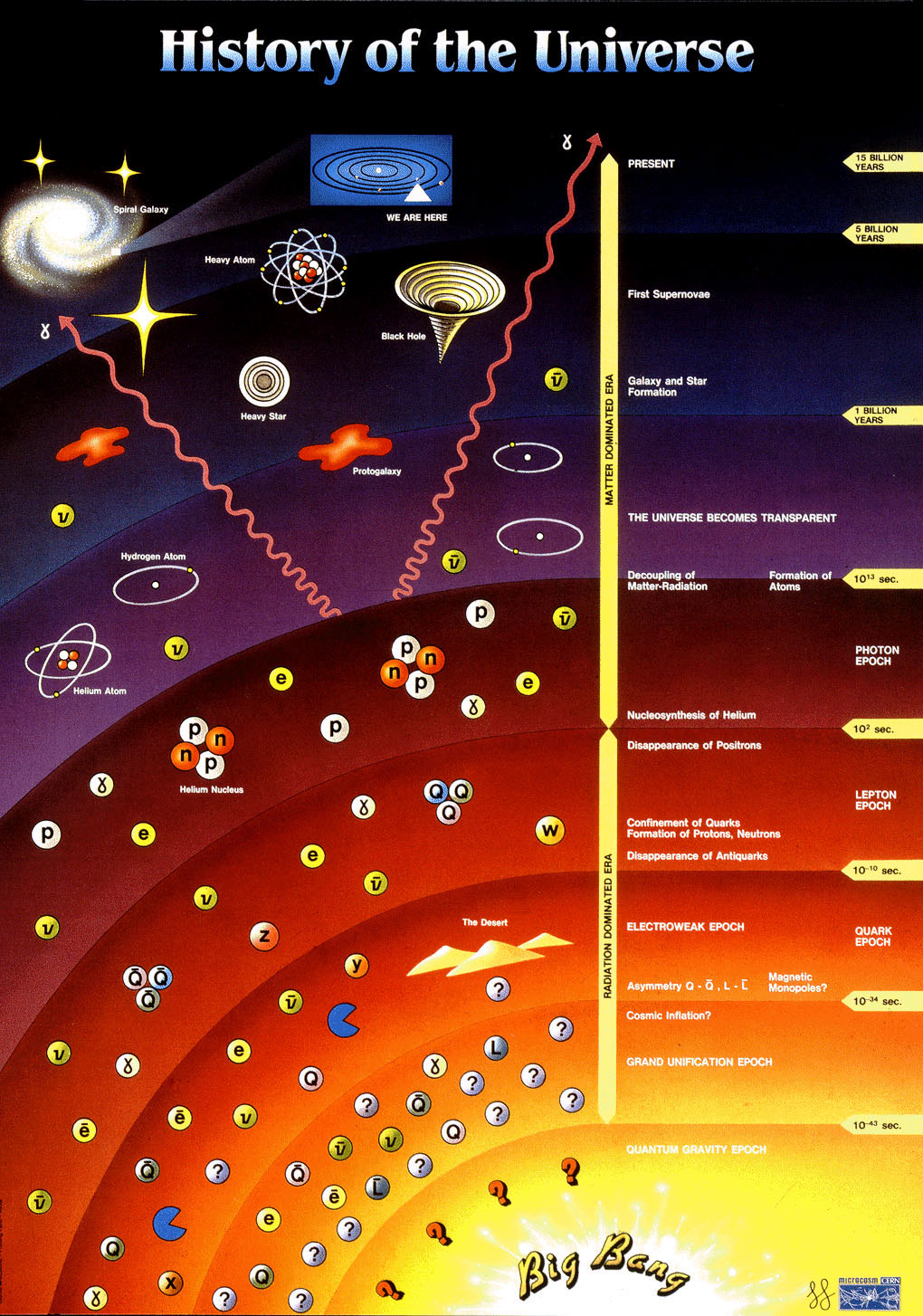
-------------------------------------------------------------------------------------------------------------------------
„Paks and the Hungarian Energy Future” by Béla Lipták, - May 13, 2014 (more details)


-------------------------------------------------------------------------------------------------------------------------
„The Deadliest Lifesavers From the rain forest to the patient’s heart” by Dr. Zoltan Takacs, - April 8, 2014 (more details)

-------------------------------------------------------------------------------------------------------------------------
„Kafka and Asbestos” ' by Professor Elizabeth Molnar Rajec, - March 4, 2014 (more details)
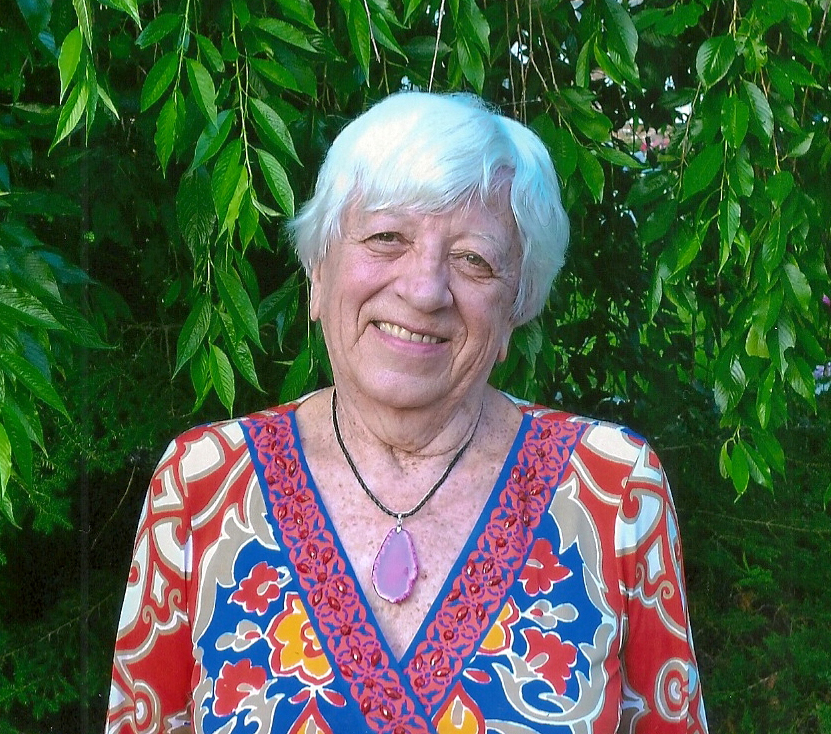
-------------------------------------------------------------------------------------------------------------------------
„In search of the seat of memory in the brain” ' by Prof. Charles R. Legéndy, - February 11, 2014 (more details)

-------------------------------------------------------------------------------------------------------------------------
„Adventures in Biophysics” ' by Prof. Mihály Mezei, - November 25, 2013 (more details)
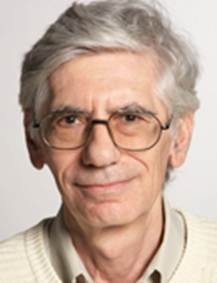
---------------------------------------------------------------------------------------------------------------------------------------------------

„Black Holes, and What We Can Learn from Them without Falling in” ' by Imre Bartos - October 28, 2013 (more details)
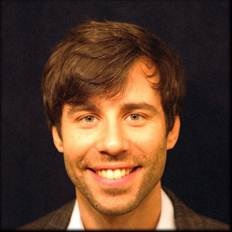
-------------------------------------------------------------------------------------------------------------------------
'Magyarságismeret' by Gábor Tarján - 2013 június 20. (more details)
-------------------------------------------------------------------------------------------------------------------------
The unreasonable success of finance by Gabor Laszlo - 2013 május 16. (more details)
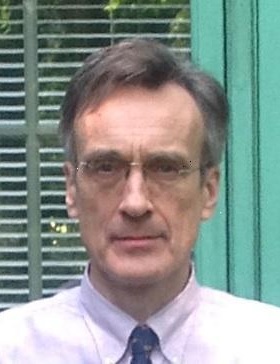
-------------------------------------------------------------------------------------------------------------------------
Marina von Neumann Whitman - 2013 április 21 (more details)
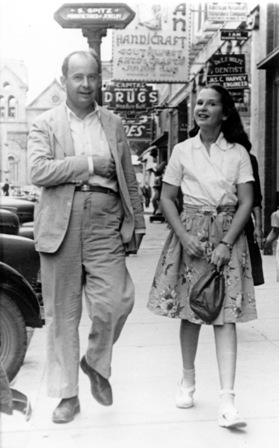
Prof. Verebey Károly - 2013 március 19.
My Lifetime Experience and Love of Medical Research: An Unimaginable Voyage
Prof. Gulyás Balázs Előadása - 2013 Január 29.
Memorial conference on the occasion of 100th birthday of JANOS SZENTAGOTHAI
Program - 2012 November 12.
Szemerédi fest - 2012 November 6.
Papp Klára előadása - 2012 Május 3.
HUNGARIAN SCIENTISTS IN THE US: YESTERDAY, TODAY AND TOMORROW
A Glimpse at the Achievements of Hungarian Scientists on this Side of the Atlantic - 2012 Április 25.
Deák István előadása - 2012 Április 5.
Széchenyi Kinga előadása - 2012 Március 1.
Miklós Müller előadása - 2012 Február 2.
Istvan Seri MD, PHD, HOND előadása - 2011 December 2.
Andrew Voros előadása - 2011 November 4.
Boreczky Elemer előadása - 2011 Június 9.
Hargittai István előadása - 2011 március 17.
Vermes Gábor előadása - 2011 február 24.
Prékopa András előadása - 2010 november 3.
Abstract: Science of Success by Albert-László Barabási
Our current approach to success is driven by the belief that predicting exceptional impact requires us to detect extraordinary ability. Despite the long-standing interest in the problem, even experts remain notoriously bad at predicting long-term impact. Success becomes suddenly predictable, however, if we see it not as an individual but a collective phenomenon: for something to be successful, it is not enough to be novel or appealing, but we all must agree that it is worthy of praise. If we accept the collective nature of success, its quantitative signatures can be uncovered from the many pieces of data around us using the tools of network and data sciences. In this talk I will focus on our ability to quantify and predict success. I will show that the future impact of research papers can be predicted by decoding the community’s early reaction to it. Moving to scientific careers, I ask if we can predict when will a scientists make her highest impact discovery and how to assign credit to collaborative work. The uncovered patterns point towards a general, quantitative theory of success and signal the emergence of a new research field, The Science of Success.
About Albert-László Barabási
Albert-László Barabási is the Robert Gray Dodge Professor of Network Science and a Distinguished University Professor at Northeastern University, where he directs the Center for Complex Network Research, and holds appointments in the Departments of Physics and College of Computer and Information Science, as well as in the Department of Medicine at Harvard Medical School and Brigham and Women Hospital in the Channing Division of Network Science, and is a member of the Center for Cancer Systems Biology at Dana Farber Cancer Institute.
Barabási has been a major contributor to the development of network science and the statistical physics of complex systems. In 1999 he introduced the concept of scale-free networks and proposed the Barabási–Albert model to explain their widespread emergence in natural, technological and social systems, from the cellular telephone to the World Wide Web or online communities.
A Hungarian born native of Transylvania, Romania, he received his Masters in Theoretical Physics at the Eötvös University in Budapest, Hungary and was awarded a Ph.D. at Boston University. After one year as post-doc at IBM Thomas J. Watson Research Center, Barabási joined the faculty at the University of Notre Dame in 1995. In 2000, at the age of 32, he was named the Emil T. Hofman Professor of Physics, becoming the youngest endowed professor. In 2004 he founded the Center for Complex Network Research.
Among many of his publications Barabási’s latest books are “Network Science” (Cambridge University Press, 2016). "Linked: The New Science of Networks" (Perseus, 2002), "Bursts: The Hidden Pattern Behind Everything We Do" (Dutton, 2010). He is the co-editor of "The Structure and Dynamics of Networks" (Princeton, 2005).
Barabasi is a Fellow of the American Physical Society and external member of the Hungarian Academy of Sciences and in 2007 he was introduced into the Academia Europea. He received many awards including FEBS Anniversary Prize for System Biology (2005), John von Neumann Medal by the John von Neumann Computer Socety (2006), C&C Prize (2008) , Cozzarelli Prize, National Academies of Sciences (USA),, the Lagrange Prize-Crt Foundation ( 2011) and in November 2011 he was awarded Honorary degree Doctor Honoris Causa by Technical University of Madrid.
Big Science and Big Data in a Small Country
Professor Péter Lévai, MTA Wigner Research Centre for Physics
Nowadays Hungarian scientists are participating in large international collaborations and have access to the most advanced high-tech facilities to perform state-of-the-art scientific experiments and investigations. We will display the recent situation and most recent results reached by physicists at the MTA Wigner Research Centre for Physics in Budapest. Scientific research activity demands high level of information technology, where Hungarian scientists are prepared at the international level, or in a few cases, even better. The Wigner Datacenter will be introduced with its activity in high energy physics and gravitation wave research. Small country can contribute successfully for Big Science if we find those focus topics, where Hungarian colleagues have special advantage collected during last decades.
About The Speaker
Lévai Péter, director general of MTA WIGNER Research Centre for Physics Budapest
Professor Péter Lévai has been serving as the director general of the Wigner Research Centre for Physics of the Hungarian Academy of Sciences since 2012. Professor Lévai dedicated most of his carrier to research within Research Institute for Particle and Nuclear Physics of HAS (MTA RMKI) from 1986 when he started as a junior researcher, to 2011 when he served as deputy director. He held research positions at various prestigious US universities and research organizations including Duke University (North Carolina; 1990-91), Cyclotron Institute of Texas A&M University (Texas; 1991-92), Columbia University (New York, 1999-2000) and Kent State University (Ohio, 2002-2003).
Professor Lévai’s research activities include relativistic thermodynamics, shock phenomena, relativistic hydrodynamics, particle production in intense field, properties of strongly interacting matter, quark-gluon plasma and strong interactions. At these fields he is a frequent invited lecturer and researcher at German, Swiss, Norwegian and US universities. He published over 105 articles in referred journals, has over 500 publications as member of NA49 and ALICE Collaboration at CERN.
He won numerous prizes like the Janos Neumann Prized, Academy and Physics Prizes of HAS, International Scholar Award of Phil-Beta-Delta in 2007. In 2007 he was awarded by the Knight Cross of the Order of Merit of the Hungarian Republic.
Professor Lévai completed his education at Eötvös University (MSc – Physics, 1986; Dr.Rer.Nat – Nuclear Physics, 1989). He earned his Ph.D in 1992 and habilitated in 2000. He was elected as Corresponding member of the Hungarian Academy of Scie
Sequence and structure relationships in the cadherin protein family by Klára Felsővályi
One of the main questions in structural biology is the connection between a protein's amino acid sequence, its three-dimensional shape, and its precise biological function. I will present this question for the case of the cadherins, a family of cell-surface proteins that mediate adhesion. Several members of the cadherin family have been thoroughly studied structurally and functionally, leading to the identification of the family's representative structural domain, and the discovery of their calcium-dependent adhesion function. However, for the vast majority of this protein family, we have only the amino acid sequence, and no additional information. For these proteins, we have predicted their architecture using computational approaches, by leveraging the known cases and searching for patterns in the available sequence data. Thus, we can begin to understand functional roles before the experimentally derived data are available.
About the speaker
Klára Felsővályi began studying biology as an undergraduate at the Massachusetts Institute of Technology. Next to her coursework, she also worked in crystallography laboratories: with Dr. Thomas Schwartz at MIT, and briefly with Dr. László Gráf at ELTE. She continued her studies at Columbia University as a graduate student with Dr. Barry Honig in the Department of Biochemistry and Molecular Biophysics. Her PhD research was on sequence-structure relationships of cadherins, focusing on both specific cases (binding affinity determinants) and family-wide studies (systematic prediction of cadherin architecture). In 2014 she became a postdoctoral fellow at NYU, working with Dr. Timothy Cardozo on an informatics method for mechanism of action profiling of drug candidates. In 2015, she was awarded an SBIR grant to form a startup company, GeneCentrix, to continue development of this project.
Abstract: The Promise of Synthetic Biology in Plants
Pal Maliga, Waksman Institute of Microbiology, Rutgers University
Email: Maliga ‘at’ waksman.rutgers.edu
Chloroplasts are the power plants of the plant cell, converting sunlight into sugars (chemical energy). The lecture will address the engineering principles that enable replacement of native chloroplast DNA with engineered forms and the addition of new functions. Affordability of synthetic DNA synthesis and the plastid genome’s small size made it a feasible goal to replace the native chloroplast genome with an entirely synthetic genome. Current efforts aim at improving crop productivity by engineering the photosynthetic machinery. Mixing and matching the C3 and C4 biochemistry of different plant taxonomic groups aim at improving the efficiency of harvesting sunlight by as much as 50%. Synthetic biology approaches enable experimentation with more efficient bacterial microcompartment designs of photosynthesis in the chloroplasts of flowering plants. The goal is more food from a smaller land area to ensure sustainable food security for future generations.
About The Speaker
Pal Maliga, Ph.D. is resident faculty in the Waksman Institute of Microbiology and is appointed Distinguished Professor in the Department of Plant Biology at Rutgers University. He received an M.S. degree in Genetics and Microbiology from Eotvos Lorand University, Budapest in 1969 and a Ph.D. degree from Jozsef Attila University, Szeged, in 1972. From 1971 through 1982 Dr. Maliga held appointments at the Biological Research Center, Szeged, Hungary, where his research group pioneered mutant isolation, organelle transfer and genetic recombination of organellar genomes in cultured tobacco cells. Before joining Rutgers in 1989 Dr. Maliga spent the year of 1982 at Washington University, St Louis, MO, and served as Research Director for Advanced Genetics Sciences, a biotech start-up in Manhattan, Kansas and Oakland, California. Since joining Rutgers, Professor Maliga and his research group developed the technology of plastid transformation in the tobacco model system. His current research interests are the biotechnological applications of plastid transformation. Professor Maliga is the principal inventor on key patents enabling plastid engineering. To create a forum for advancing chloroplast biotechnology in 2015 Dr. Maliga initiated a new Gordon Research Conference series. His pioneering contributions to creating the field of chloroplast biotechnology have been recognized by the Thomas Alva Edison Patent Award from The Research and Development Council of New Jersey in 1999, the Inventor of the Year award by The New Jersey Inventors Hall of Fame in 2011; and for making multiple groundbreaking discoveries in chloroplast biology the 2016 Lawrence Bogorad Award for Excellence in Plant Biology Research from the American
Abstract: Synthetic biology: A new approach to biology and medicine by Gábor BALÁZSI, Ph.D, Stony Brook University, Stony Brook, NY
Synthetic biology is a new scientific field that designs and builds artificial biological systems, using principles from engineering, mathematics and physics. Recent success stories from other laboratories include the massive, low-cost synthesis of the anti-malaria drug artemisinin, and the construction of genetic switches, oscillators and logic gates. In my laboratory we build synthetic gene circuits and use them as new tools to precisely perturb cells and watch how they respond. This way, we hope to develop a predictive, quantitative understanding of biological processes such as microbial drug resistance and cancer. We have developed an expanding library of synthetic gene regulatory circuits first in yeast, and then in human cells for this purpose. I will present a few examples of how we can gain a deeper understanding of microbial drug resistance and cancer using synthetic gene circuits. I will also mention potential medical and industrial applications of these newly emerging biological devices.
About The Speaker
Gábor BALÁZSI, Ph.D, was born in the Székelyföld (Szeklerland) region of Transylvania and trained as a physicist at the Babeş-Bolyai University in Kolozsvár (Cluj), Romania. In 1997, he started graduate school at the University of Missouri at Saint Louis, USA, as a PhD student with Professor Frank Moss. His PhD research was on perturbation propagation and synchronization in normal and epileptic neurons and glial cells. In 2002, he continued as a postdoctoral fellow in Systems Biology at Northwestern University in Chicago, studying gene-regulatory network response to environmental changes with Professors Zoltán N. Oltvai and Albert-László Barabási. In 2005 he became a postdoctoral fellow at Boston University with Professor James J. Collins. There he designed synthetic gene circuits to study how cellular diversity promotes drug resistance. He continued and expanded these efforts in his own laboratory over the last decade (8 of which were at the University of Texas MD Anderson Cancer Center in Houston, Texas), building a growing library of synthetic gene circuits first in yeast, and then in cancer cells. As the Henry Laufer Associate Professor of Physical and Quantitative Biology at Stony Brook University he leads an interdisciplinary research group, which utilizes synthetic gene circuits to control genes in yeast and human cells. Their goal is to understand fundamental biological processes underlying microbial drug resistance and cancer. Dr. Balázsi was one of the recipients of the 2009 NIH Director’s New Innovator Award, which was created to “stimulate highly innovative research and support promising new investigators”. His research group is half-experimental and half-computational, fostering interdisciplinary training while advancing the frontiers of quantitative biology.
Abstract: Follow your Gut: The Science behind Microbiome
by Dorottya Nagy-Szakál MD
Columbia University, Center for Infection and Immunity
The human gut microbiome is the group of living microorganism living in our digestive tract. The microbiome has a crucial role in human metabolism, physiology and immune function. The nutritionally responsive microbiome may be modulated by different dietary factors. There is a critical developmental period when nutrition (such as fiber or fat) may alter the microbiome composition leading to the progress of diseases later in life. The altered gut microbes may influence the colonic homeostasis and predispose to intestinal inflammation and the development of different gastrointestinal (GI) disorders.
This novel nutrition-microbiota-host paradigm fits with the well-known clinical observation that the modulation of microbiome by complex fecal microbiota transplantation (FMT) treats antibiotic-resistant Clostridium difficile infection (rCDI) and associated with the improvement of inflammatory bowel disease (IBD; Crohn disease and ulcerative colitis) symptoms. The incidence, hospitalization and morbidity of rCDI and IBD are emerging in the developed countries. These GI conditions are highly associated with an altered microbiome.
My talk focuses on pediatric population giving the fact that there is a crucial window period when the modulation of the microbiome by nutrition or directly, may lead to inflammation or the opposite, the protection against GI disorders. To better understand the fascinating association of nutrition, intestinal microbiome and host response, I examined the complexity of microbial responses altered by nutrition in mouse models. Also, our bench-side research developed into a bedside clinical trial, by providing FMT for pediatric patients with rCDI and ulcerative colitis. Our results and further studies may provide future pharmacological, microbial, and genetic interventions/therapies during the perinatal period and early childhood.
About The Speaker
Dorottya Nagy-Szakal, MD. earned her medical degree in 2009 at Semmelweis University (Budapest, Hungary). She immediately involved herself in student research focusing on pediatric gastroenterological disorders, which she continued throughout her medical school training. After graduation, Dorottya had the opportunity to move forward in her carrier and work in one of the best research centers in the world. She joined to a research program of Baylor College of Medicine, Texas Children’s Hospital and Children Nutrition Research Center (Houston, TX, USA). Her study is engaged to early developmental period when dietary factors, epigenetic and microbial changes may affect the pathogenesis of different gastrointestinal disorders. She was fortunate being active part of a study, which developed from a bench-side research to a bed-side clinical trial, providing fecal bacterial transplantation for pediatric patients with recurrent Clostridium difficile infection and ulcerative colitis. Her work was awarded with Distinction and First Place Award on annual scientific conferences in 2014.
Currently, she is holding a research scientific position at Columbia University (NY, USA), working at the Center for Infection and Immunity since 2015. Her major role at the center is microbial and viral pathogen discovery and identification, bioinformatics and phylogenetic analysis, and to understand the nature of mammalian gut microbiome in different disorders. Dorottya’s over 20 co-author peer-reviewed publications and 2 book chapters support her strength in the field of pediatric inflammatory bowel diseases, colonic mucosal immunity, microbiome and viral research.
Opioid pain relievers from a Southeast Asian tree: mitragynine and its derivatives
by András Váradi
Memorial Sloan Kettering Cancer Center, Department of Neurology
Effective pain management is one of the greatest challenges of modern medicine. Opiates, such as morphine are preferred for the treatment of moderate to severe chronic pain but have problematic side effects such as tolerance, physical dependence, respiratory depression, and constipation. Natural products found in the Southeast Asian plant Mitragyna speciosa, commonlyknown as kratom, represent novel opioid scaffolds that are structurally unrelated to morphine, providing unique opportunities to identify opioid pharmacophores. We studied the pharmacology and structure-activity relationship (SAR) of mitragynine pseudoindoxyl (MP), an oxidative rearrangement product of mitragynine. Results indicate that MP and its semi-synthetic analogs show promise as novel potent analgesics acting as mu opioid receptor agonist/delta opioid receptor antagonists. The compounds were not only potent analgesics in mice but they also developed tolerance very slowly, displayed no reward and showed only limited physical dependence, respiratory depression, and constipation. Together, these findings indicate that the mitragynine pseudoindoxyl scaffold produces antinociception free of many opioid side effects, suggesting that its analogs might represent the next generation of novel pain relievers.
About the speaker
András Váradi earned his Pharm.D. degree in 2009 from Semmelweis University, Budapest, Hungary. His research interests have been focused on synthetic and medicinal chemistry ever since he started research as an undergraduate student. His Ph.D. dissertation discussed the synthesis and physicochemical characterization of natural and synthetic opiate metabolites, as well as their possible application in treating pain. Fascinated by the world of opioid chemistry and pharmacology, he joined the group of Dr. Gavril W. Pasternak at Memorial Sloan Kettering Cancer Center (New York, NY) as a post-doctoral researcher. He has been working on the synthesis and pharmacological characterization of non-addictive opioids. During his work, he designed a total synthesis of mitragynine and its derivatives and utilized multicomponent reactions to synthesize diverse heterocycles and carfentanil-like opioids. His work has resulted in 13 research papers, 1 review article, 1 book chapter, and 1 patent application.
ALEXANDRA KRISZTOFER MA., MS. NEW YORK METHODIST HOSPITAL DEPARTMENT OF NEUROSCIENCES Eugene & Carolyn Czap Center for Alzheimer’s and other Dementias
Ms. Krisztofer has a unique, artistic and professional education as well as career. She started her training in fine art and became an aspiring artist/animator in a cartoon studio, continuing with a 10 year career in modern dance, simultaneously with her higher education in psychology at the Eotvos Lorand University in Budapest. After a year working as a psychologist in Psychiatry Ward at the National Institute for Psychiatry and Neurology (OPNI), she became interested in utilizing dance/movement techniques in therapy. She moved to New York to pursue her second graduate degree in Dance/ Movement Therapy at Hunter College, and became a dedicated Recreation/Dance Therapist and an Assistant Director working in major hospitals, rehabilitation centers in Manhattan for 8 years. Eventually she felt the need for a holistic therapeutic intervention in health care, including nutrition and alternative healing modalities. Studying Holistic Health Education for 2 years in Boston has changed her therapeutic approach as well as her own lifestyle. A family need urged her to move back to Budapest in 2002, and ironically she started to work at the same hospital (OPNI) where she started her professional career. At this time she got an opportunity at the Neurorehabilitation Ward of the Stroke Center as a neuropsychologist while pursuing a 2 year postgraduate training in Neuropsychology at the Semmelweis University. Returning to New York in 2008 she started a successful 5 year pilot program at the Long Island Alzheimer’s Foundation with early stage Alzheimer’s clients. The program included cognitive assessment, 4 hour group Brain Training, based on the cognitive rehab method and 4 hour Creative Expression session with exercise, dance therapy, visual art and qi gong, in addition to computer based personalized brain fitness class. Ms. Krisztofer currently works at the New York Methodist Hospital, Department of Neurosciences, where she is on the mission to build up a new Alzheimer’s/Memory Care Program for the more than 600 patients who suffer from some kind of memory disorder. Her goal is to offer a multidimensional early intervention, which includes weekly brain fitness, physical fitness, neurological music therapy, art and qi gong classes to improve/maintain cognitive and social functioning, reduce stress, monthly wellness program to improve lifestyle, as well as individual computer based brain trainings. Starting a research study with the neuroscience team is also part of her future project. In part time she is a Wellness Consultant in a private doctor’s office and for clients partnering with her personal trainer son.BRAIN HEALTH - DEMENTIA PREVENTION
Healthy brain is the key factor in healthy aging and well-being. In a young age we take for granted that our brain functions well as long as we live. As we reach the middle age and catch ourselves losing, forgetting things, or not learning, concentrating as easily as we used to, we start worrying about getting Alzheimer’s disease (AD), the most frequent and freighting type of brain disorder. The ‘baby boomer’ generation (ages 50-70 now) has, indeed a high risk for dementia, since the prevalence of the AD is accelerating toward the international epidemic level. Many of the so called ‘sandwich generation’ have been taking care of not just their children, grandchildren, but also their parents, grandparents, in-laws, who suffered from some form of neurological disorder. Yet this generation has the most unhealthy, stressful lifestyle and environmental damages which are major contributors to these type of diseases beside genetic predisposition. Researchers have been working on finding the cure for Alzheimer’s disease and other neurodegenerative diseases for decades. Although they have made promising progress, the cure or the effective treatment is yet to be discovered. We cannot just sit and wait for the magic pill or vaccine, we have to be proactive to protect our brain by lowering the risk factors in order to delay/prevent mental decline. If we can stave off the onset of dementia long enough, we may never experience any symptoms, and that could be considered prevention. Neuroscientists and health professionals in the AD/dementia research field have reached a consensus that dementia has a multifactorial etiology, resulting from interaction between both genetic and environmental factors. Therefore a multidimensional, early intervention is necessary to control the risk factors even before the symptoms appear. Fortunately in the recent years several evidence based AD/dementia prevention/ intervention programs were published which provide great deal of hope to defeat these devastating diseases. Based on the latest research, we will review the major risk factors and the strategies to decrease them, focusing on the lifestyle and environmental changes we can make to improve our brain health. “It is far easier to rescue a sick neuron than a dead neuron.” David Benett, MD, Brain Researcher Rush University Medical Center, Chicago
„How Astronomy Grew Its Ears”
…two black holes collided 13 billion years ago and we’ve just heard it…
Zsuzsa Márka, PhD (Columbia University) one of contributors to the Laser Interferometer Gravitational-Wave Observatory (LIGO) gives a lecture on the groundbreaking scientific achievement of the detection of gravitational waves.
Miklos Muller
The Soviet agronomer, Lysenko., charlatan or scientist, then and now.
Trofim Denisovich Lysenko (1898-1976) was a poorly trained agronomer who developed the so called creative Soviet Darwinism or Michurinist biology. This theory denied most results of modern genetics and plant breeding. After years of struggle with competent scientists, with Stalin’s active support, it was declared the exclusive doctrine in the USSR and its satellite countries in 1948. On its basis a number of deleterious methods were introduced into Soviet agricultural practice during the rule of Stalin and Krushchov. After deposition of Khruchov this doctrine gradually disappeared and modern biology became again dominant again in Russia but it did not disappear entirely. In the last decade it is being vociferously revived and Lysenko is being touted as one of the greatest Russian scientists. This is a significant part of a strong movement to restore the credibility of the Soviet period as the most glorious era of the Russian empire. The presentation will explore these events and will try to reveal the motives for the resurrection of this tragic period in the history of science.
Brief Curriculum Vitae
Dr. Miklóos Müller is professor emeritus at the Rockefeller University in New York. He received his MD from the Semmelweis Medical Unveristy in 1955. He moved to New York in 1964. His experimental research focused on the cell and molecular biology and evolution of parasitic unicellular organisms. His group described a novel cell organelle, the hydrogenosome in 1973. Since he closed his research laboratory more than a decade ago, he explores various aspects of the history of biology in Central and Eastern Europe. Dr. Müller is an external member of the Hungarian Academy of Sciences, he received an honorary doctorate from the René Descartes University (Paris V) and is honorary member of several Hungarian and other sceintific societies. He was honored by his native country with the Knight’s Cross of the Hungarian Order of Merit.
Vizi E. Szilveszter, E. Sylvester Vizi, MD, PhD, DSc, MHAS, HonFBPhS
Dr. Vizi received his medical decree from (now called) Semmelweis University of Budapest and earned his Ph.D. in 1969, became pharmacology professor in 1976 and Doctor of Sciences (DSc) in 1977. Dr. Vizi was a Riker Fellow at the Department of Pharmacology of the University of Oxford from 1967 to 1969, where he worked alongside Sir William Paton. He was visiting professor at the universities of Mainz and Parma. He also taught at the Albert Einstein College of Medicine of Yeshiva University (Montefiore Medical Center) as a visiting professor since 1984. He served as deputy chairman of the medical research council department of the Ministry of Health (1977-1981), director at the Institute of Experimental Medicine of the Hungarian Academy of Sciences (HAS) and Chair of the Department of Pharmacology and Therapy at the Imre Haynal University of Health (since 2000 part of Semmelweis University). He was named director of the institute in 1989 and held this post until 2002. Dr. Vizi became corresponding member of the Hungarian Academy of Sciences (MTA) in 1985, full member in 1990. He served as vice president of MTA (1996-2002) and president (2002-2008). He is member of Academia Europaea, member of the board of the Hungarian Football Association, editor-in chief of Neurochemistry International and section editor of the Brain Research Bulletin.
Ivan Bodis-Wollner, M.D., D.Sc
Dr. Bodis-Wollner received his medical degree from the University of Vienna and trained in neurology at Mt. Sinai Hospital, New York. He did a post doctoral fellowship in neurophysiology at Cambridge University, England. He is Doctor Honoris causa of Szentgyorgyi Albert University. He has served as professor of neurology and ophthalmology at Mt. Sinai Hospital, University of Nebraska and currently at SUNY Downstate Medical Center, NY. Dr. Bodis-Wollner is the author of more than 220 peer reviewed papers and seven books. These are primarily related to his lifelong interest and research on basic brain processes involved in making sense of visual information and to visual problems in particular in Parkinson’s disease. He served as member on NIH Advisory Committees and was Co-Chairman for the :National Academy of Sciences, National Research Council Co-Chairman, Working Group on Vision, Commission on Behavioral and Social Sciences and Education (l982-5).He is a member of the Hungarian Academy of Sciences, a fellow of the Hanse Institute for Advanced Studies, Germany. He has served as Visiting Professor and Named Lecturer in the United States, Europe, China and Japan. He was chief Editor of several journals and serves on a number of editorial boards.
What the eye does not tell the human brain
In a landmark study of the frog’s eye (1957), a group at MIT predicted what the frog CAN see in the world. Can one predict the same in humans ?
When healthy persons take off glasses, their brains tell them what they do not see clearly. Conversely, Parkinson Disease (PD) patients rarely complain of vision. Why? Are they “blind’ to their visual deficit? Possibly in PD the brain “reports” the visual deficit, not in language , but by imprecise eye movements. We move our eyes quickly many thousand times every day. We use these quick eye movements, called “saccades” (S), to look at something and sometimes to look for something. Monkey experiments show that “where” to look is decided by the brain before S and before any visual target appears. In PD both the brain organization for S and vision are deficient and thus uncalibrated for reality check by the brain. In humans one can’t predict what one sees from retinal activity alone. For being able to make sense of degraded visual input the brain has to generate pre-motor perceptual plans.
This will be a presentation (in English) of some of the highlights of this new book, which introduces the reader to the visible memorabilia of science and scientists in Budapest. Six of the eight chapters of the book cover the Hungarian Nobel laureates, the Hungarian Academy of Sciences, the university, the medical school, agricultural sciences, and technology and engineering. One chapter is about the famous Budapest high schools, and one is devoted to scientist martyrs of the Holocaust.
István Hargittai is Professor Emeritus (active) of the Budapest University of Technology and Economics, member of the Hungarian Academy of Sciences, the Academia Auropaea (London) and foreign member of the Norwegian Academy of Sciences. He is the Editor-in-Chief of the international journal Structural Chemistry. His books have appeared in eight languages and include Great Minds, Buried Glory, Judging Edward Teller, Drive and Curiosity, and more.
Magdolna Hargittai is Research Professor at the Budapest University of Technology and Economics, member of the Hungarian Academy of Sciences and the Academia Europaea (London). Her books have appeared in five languages and include Women Scientists, Symmetry through the Eyes of a Chemist, Visual Symmetry, Great Minds, Candid Science, and others.
The Hargittais are currently working on their new book, New York Scientific (to be published by Oxford University Press, UK).
Abstract: The Role of Statistics in Pharmaceutical Drug Discovery and Development
by Edith A. Zang, Ph.D
Evidence based medicine is a new paradigm for health care. It involves emphasizing the use of evidence from well designed and conducted research. Prehistoric man looked upon illness as a spiritual event or being possessed by demons, and treatment involved cleansing the body or the spirit of these demons by manipulating the various forms of energy that passed through the body. Following the ancient Greek model of the cause of disease, physicians treated patients with the goal of restoring balances in blood, phlegm, and bile. Finally, in the 1800s, numerical methods came into favor in drug development. By the end of the 19th century, the principles of comparative trials had been suggested, and in 1948 the first randomized clinical trial was conducted on the treatment for tuberculosis by a British statistician, Austin Bradford Hill. By the 1950’s randomized clinical trials became the gold standard for testing new drugs.
The use of statistics to support drug discovery and development has grown exponentially since the Kefauver-Harris Amendment in 1962, which required drug sponsors to prove a product’s safety and efficacy in controlled clinical trials before it could be marketed. Consequently, each stage of clinical testing has since been heavily reliant on statistical design and analysis. The FDA’s Critical Path Initiative (2004), and its Safety and Innovation Act (2012) further emphasize the need for mathematical and statistical models to create more innovative study designs and analysis methods through the implementation of model-based drug development.
Current trends, including the analysis of pooled data across trials, drugs and even across pharmaceutical companies; the mining of historical trial data; the analysis of DNA microarrays to identify targets for therapeutic intervention; and the increased application of Bayesian versus frequentist statistics in the design and analysis of adaptive clinical trials are expected to revolutionize the process of drug discovery and development.
About the Speaker
Edith Zang left Hungary in December 1956, arriving in New York in 1958. She earned a B.A. in biology at Hofstra University in 1972, and an M.A. and Ph.D. in the Ecology and Evolution Program of the Division of Biology at the State University of New York at Stony Brook, in 1979.
She spent the first part of her career working as a biostatistician and epidemiologist, mostly in cancer research. First, she concentrated on cancer treatment studies at the Memorial Sloan-Kettering Cancer Center, and later on cancer prevention research at the American Health Foundation. Between 1979-88 she worked in the Laboratory of Epidemiology of the New York Blood Center, first as the biostatistician for the hepatitis B vaccine trial (Heptavax ) which gained marketing approval in 1980, and later as a co-investigator on several epidemiological studies on AIDS. From 1980 through 2009 she held an appointment as adjunct clinical assistant/associate professor in the Department of Public Health of the Weill Medical College of Cornell University, teaching a course in biostatistics and epidemiology to medical students.
In 1997 she made a late-career move from non-profit research to the pharmaceutical industry, working on the design and analysis of Phase I-III clinical trials - first at Novartis and later at Eisai. At Eisai she participated in gaining simultaneous marketing approval from the FDA, EMEA and the Japanese regulatory agency for the company’s first oncology drug.
Since retiring from Eisai in 2011, she has worked as a full-time statistical consultant to various pharmaceutical companies including Novartis, Sanofi-Aventis/Genzyme, and Astra Zeneca.
„Ferenc Molnar: His life and works”
by Professor Elizabeth Molnar Rajec PhD
Ferenc Molnár, born as Ferenc Neumann on January 12, 1878 into a well-to-do Jewish family. In 1896 he changed his name to Molnár in tribute to the profession of a favorite uncle who was a miller. But this onomastic “magyarization” choice was also a gesture of asserted nationalism. Despite the isolation of the Hungarian language, Ferenc Molnár achieved the greatest international fame as a prolific writer. Among many other works he wrote 42 exhilarating stage plays (best known is “Liliom”, 11 novels, most read is “The boys of Pál Street”) and more than 70 films are connected to his name. The rise of Nazism impelled the 62-year-old writer’s 1940 emigration to the United States, where he lived for 12 years at the Plaza Hotel in New York City. He died of stomach cancer at Mount Sinai Hospital in 1952.
About the Speaker
Elizabeth Molnár Rajec was born in Bratislava (Pozsony), was deported as Hungarian minority to Hungary in 1947. During the Hungarian Revolution in 1956 escaped to the West, lives in New York City since 1957. She has degrees from Columbia (BS) and Rutgers Universities (MLS) and received her PhD from the City University of New York in 1974. She was an academic librarian, a professor, a Fulbright and IREX research scholar, retired as Professor Emerita in 1996. She published extensively on Ferenc Molnár, on literary onomastics and on Franz Kafka. As a devoted PEN member she traveled a lot and widely exhibited in Europe and in the United States her kaleidoscopic photomontage creations.
„Dawkins’ Dilemmas: Trouble for the World’’s Most Famous Atheist?”
by David Seiple M.T. S, Ph.D.
”
David Seiple received his BA from The College of Wooster, his Masters in Theological Studies (Theology and New Testament) from Drew University Theological School, and his PhD (Philosophy) from Columbia University. He has taught courses in philosophy, religion, and critical thinking in colleges in the New York area, including New York University, Drew University, Trinity School, and New York Institute of Technology. He currently teaches courses in Philosophy and Critical Thinking in the City University of New York.
His publications include articles in The Encyclopedia of Aesthetics, Critical Texts, Union Seminary Quarterly Review, Review of Biblical Literature, Journal of the American Academy of Religion, Contemporary Pragmatism and The Dictionary of Literary Biography. He is co-editor (with Casey Haskins) of Dewey Reconfigured (SUNY Press), and co-editor (with Frederick Weidmann) of Enigmas and Powers: Engaging the Work of Walter Wink for the Classroom, Church, and World (Wipf and Stock). His latest publications are “The Spirit of Arthur Danto” in vol 33 of The Library of Living Philosophers (Open Court, 2013) and “Faith for Faithful Disbelievers: Christopher Morse as Systematic Theologian” (Union Seminary Quarterly Review, 65, 1 & 2).
He has served as Chair of the Commission on Ecumenism and Interfaith Relations for the New York Conference of the United Church of Christ, and is a member of Broadway United Church of Christ (NYC).
„„50 years of graph theory: the networks by which we are all connected”
by Professor László Lovász
”
László Lovász (born March 9, 1948) is a Hungarian mathematician, best known for his work in combinatorics, for which he was awarded the Wolf Prize and the Knuth Prize in 1999, and the Kyoto Prize in 2010. He is the current president of the Hungarian Academy of Sciences.
In high school, Lovász won gold medals at the International Mathematical Olympiad (in 1964, 1965, 1966 with two special prizes).
Lovász received his Candidate of Sciences (C.Sc.) degree in 1970 at the Hungarian Academy of Sciences. His advisor was Tibor Gallai.
Until 1975, Lovász worked at Eötvös Loránd University, between 1975–1982, he led the Department of Geometry at the University of Szeged. In 1982, he returned to the Eötvös University, where he created the Department of Computer Science. The former and current scientists of the department include György Elekes, András Frank, József Beck, Éva Tardos, András Hajnal, Lajos Pósa, Miklós Simonovits, Tamás Szőnyi.
Lovász was a professor at Yale University during the 1990s and was a collaborative member of the Microsoft Research Center until 2006. He returned to Eötvös Loránd University, Budapest, where he was the director of the Mathematical Institute (2006–2011).
He served as president of the International Mathematical Union between January 1, 2007 and December 31, 2010.
In 2014 he was elected the President of the Hungarian Academy of Sciences (MTA).
Lovász wrote 6 papers with Paul Erdős, a highly productive mathematician, which earned Lovász an Erdős number of one.
„„Neural mechanisms for discovering casual structure in traumatic environments”
by
Tamás Madarász
”
Cellist Tamás Madarász is a graduate of Trinity College, Cambridge, the Robert-Schumann Academy in Düsseldorf and the École Normale de Musique and Conservatoire Superieur in Paris. As a soloist, recitalist and chamber musician he has played throughout Europe, and besides major musical centers such as London, Paris, Cologne, Budapest or New York, his concerts have taken him to countries as far and wide as Israel, Singapore or New-Zealand.
Born in 1981, in Budapest he began his musical studies at the age of eight. Four years later he won first prize at the Budapest Cello Competition, and was consequently invited to such major venues as the Great Hall of the Liszt Academy or the Óbuda Festival Centre, where his performance was also transmitted live on National Radio. Further competition victories followed in England, where he spent a year as an international scholar at Eton College, and upon his return to Hungary at the National Chamber Music Competition and Festival where he was awarded First Prize and the Audience Prize.
Winner of a full scholarship from Cambridge University he studied mathematics at Trinity College between 1999 and 2002. After graduating he attended the master classes of ‘cellist and conductor Johannes Goritzki in Germany, where he received his Performance Masters with distinction in the summer of 2006. From 2006 to 2008 he was a participant in the ‘perfectionement’ course for soloists at the École Normale de Musique in Paris, generously sponsored by the French government and the Île-de-France council.
In 2009 he moved to the United States, where he now resides in New York City as a MacCracken fellow at NYU, working on his PhD thesis. Since moving to the city he has performed at venues as diverse as Carnegie Hall, Steinway Hall, the Bell House, Bowery electric, Poisson Rouge, or the floating concert hall the Barge, but also at countless downtown bars and clubs, playing a diverse and ever-changing repertoire from classical solo-and chamber recitals to country rock.
He is a regular guest of prestigious international festivals, such as the Budapest Spring Festival, the Jewish Summer Festival, the Schleswig Holstein Music Festival, the Ticino Musica Festival in Switzerland or the Fête de la Musique in Paris.
Music Program:
J. S. Bach: Preludim in C major, BWV 10009
Cassado: Preludio-Fantasia
Kodály: Adagio, from the Sonata for Cello, op. 8
Ligeti: Sonata for Cello Solo, I. Dialogo, II. Capriccio
„Antibiotic resistant bacteria in New York,
origin of a resistance gene and spread of resistant clones of MRSA”
BIOSKETCH
Alexander Tomasz a native of Hungary arrived to the United States in January 1957 as one of the large group of Hungarians who left the country in that year. After a short apprenticeship at the Sloan Kettering Institute for Cancer Research, he enrolled in Columbia University where he earned a Ph.D. in biochemistry. After a postdoctoral fellowship in Rollin Hotchkiss’s laboratory, he rose in rank to Professor at the Rockefeller University where he is currently Head of the Laboratory of Microbiology and Infectious Diseases and was awarded an Endowed Chair in 1998.
Dr. Tomasz was the founder and Chairman of a Gordon Research conference on Bacterial Cell Surfaces; has been Chairman of the Board of Scientific Counsellors, NIAID and the Max Planck Institut fur Molekulare Genetik, Berlin, Germany. He was recipient of the Hoechst Roussel Award in Chemotherapy and the Selman Waksman Award in Microbiology. He has been a member of the Task Force on Impacts of Antibiotic Resistant Bacteria, Congress of the United States, and the Advisory Board of WHO on Bacteria resistant to Antimicrobial Agents, Geneva, Switzerland.
The Tomasz Lab, a group with a strong international flavor, has been making numerous contributions to microbiology, genetics and biochemistry (over 426 publications), particularly in the case of two human pathogens, Streptococcus pneumoniae and Staphylococcus aureus, both of which acquired resistance to multiple antibacterial agents.
In his presentation entitled “Antibiotic resistant bacteria in New York - origin of a resistance gene and spread of resistant clones of MRSA,” Dr. Tomasz is planning to provide an update on his studies on antibiotic resistant S. aureus (MRSA) clones in hospitals and community health centers in New York and describe current thoughts concerning the evolutionary origin of an antibiotic resistance gene.
Population decline: Problems and countermeasures
Presentation on 9 December 2014 by Paul Demeny (Demeny Pal Gyorgy)
Distinguished Scholar of the Populat Council,
External Member of the Hungarian Academy of Sciences
Abstract
In the post-World War II decades the central international demographic issue was the extraordinarily rapid rate of population growth in the so-called third world. In the past seventy years the wide differential between rich and less developed countries in terms of changing population size resulting from markedly different patterns of the transition from relatively high fertility and high mortality to low fertility and low mortality had far-reaching economic, social, and geopolitical consequences. Rapid population growth in the LDCs imposed added economic burdens on the latter group’s development and generated national and international programs seeking to moderate the resulting imbalance between resources and population size. Nevertheless, the population growth differential has dramatically reshaped the world’s demographic map, greatly diminishing the population share of the rich countries within the global total. In the most recent decades another, but still not adequately appreciated and dealt with population issue has emerged: that of very low levels of fertility in the advanced countries, and sporadically also outside that group: fertility levels that imply current or impending population decline in the affected countries. Today every single country in Europe experience sub-replacement-level reproduction, signaled by an average total fertility rate short of, in many countries often by a wide margin, the roughly 2.1 children per woman necessary for the long-run maintenance of population size. An ominous implication of this unprecedented demographic pattern is not only, and not primarily, a diminished population size but the rapid aging of the population structure, resulting in a growing imbalance between the size of the potential labor force-age population and that of those past retirement age. The presentation outlines the broad quantitative aspects of the contemporary global demographic situation and its determinants, considers what this implies for future population change and for shifts in the relative sizes of countries and groups of countries, and deals with the deficiencies of public policy responses low fertility countries thus far have deployed, using the familiar tools of modern welfare states, in trying to remedy or at least attenuate the resulting problems as seen from a national point of view. Application of these measures have proven remarkably ineffective. Issues to be examined seek answers to a number of key questions. Might heavier application of the “Swedish-style” pro-fertility policy work? What are the impediments for applying heavier doses of the recipe? Is there a compelling case for a search for approaches beyond the conventional repertory? The answer is affirmative, but individual freedom of choice (including the choice of childlessness or of a single child) must be preserved; exhortative political pressures on individuals and attempts at state-managed cultural engineering must be avoided; material incentives must be ethically and socially justified; and measures should remain rational and viable even if the need for them qua population policy tools would be vitiated by emerging favorable trends in fertility. I outline two radically innovative policy changes that both satisfy these criteria and promise a new level of effectiveness in raising fertility.
Biographical note
from Professor Paul George Demeny (Demeny Pal Gyorgy)
I was born in Nyiregyhaza, Hungary, in 1932. My middle schools were the Piarist gymnasium in Debrecen and, after the school’s demise by nationalization, the Debrecen Collegium of the Reformed Church, where I obtained my baccalaureate in 1951. I received a diploma from the University of Economics in Budapest in 1955, following which I worked in the Central Statistical Office under the tutelage of the eminent Hungarian demographer, Louis Thirring. In 1957 I entered the Institut Universitaire des Hautes Etudes Internationales in Geneva, Switzerland, and then, having received a US fellowship, continued my graduate studies in economics at Princeton University. I received there my Ph. D. in economics in 1961 and also became an American citizen. My first American work place was Princeton University as assistant professor of economics and associate at the Office of Population Research. My work career continued at the University of Michigan where, after a semester as visiting professor of demography at the University of California, Berkeley, I achieved the rank of full professor of economics in 1969. This was followed by my accepting an invitation from the University of Hawaii to continue there as professor of economics and where I also could establish a sizeable new research unit, the East-West Population Institute, of which I was director, specializing in population research focused on the Asia-Pacific region. In 1973, on the invitation of the Population Council, a private institution founded by John D. Rockefeller the 3rd, I moved to New York as the Council`s vice president. Until my retirement in 2013 as Distinguished Scholar I worked at the Population Council where I also founded the quarterly Population and Development Review. This journal, which I edited for 38 years, soon became the leading organ of its scientific field. My academic work, in books and specialized studies focused on analyses of population dynamics and on issues of population policy: on these themes I also gave lectures and presentations in over 30 countries worldwide. In 1986 I was elected as the third non-American born president of the Population Association of America. In 2001 I became External Member of the Hungarian Academy of Sciences. In 2003 I was honored by the International Union for the Scientific Study of Population as its Laureate and also received the Olivia Nordberg Schieffelin Award for Excellence in Writing and Editing in the Population Sciences. Since my retirement some of my professional activities have continued. I gave lectures at Oxford University, and earlier this year an invited special lecture at the conference of the European Association for Population Studies held in Budapest, and in October 2014 at the session of the European Environment and Sustainable Development Councils (EEAC), held in the Hungarian Parliament, as a keynote speaker.
Prof. Dezső Horváth
MTA Wigner Research Centre for Physics, Institute for Particle and Nuclear Physics, Budapest, Hungary
Dezso Horvath received his MSc in Physics at the Eotvos Lorand University of Budapest in 1970. He started his studies in experimental particle ohysics at the Joint Institute for Nuclear Research (Dubna, Russia) and later worked at particle accelerators of the Leningrad Institute of Nuclear Research, of TRIUMF (Vancover, Canada), Brookhaven National Laboratory (USA), of the Paul Scherrer Institute (Switzerland) and at various machines od CERN. He organised common Budapest-Debrecen research teams for CERN experiments: to study the matter-antimatter symmetry with low energy antiprotons, and search for new phenomena, Higgs-bosons and supersymmetric particles at the Larga Electron-Positron (LEP) collider and at the Large Hadron Collider (LHC). He has more than 700 publications registered in the InSpire data base of particle phyisics with above 37000 citations; his Hirsch index is 81. He was until 2012 the head of the High Energy Physics Department of the Wigner Research in Debrecen, at present he is a Professor Emeritus. He coordinates the work of Hungarian CMS group at LHC and teaches particle physics at the Univesity of Debrecen. He gives invited plenary talks at international conferences and also popular education lectures for general audiences. For his scientific accompishments he received in 2012 the Szechenyi Prize of Hungary. At present he is the charman of the Particle Pgysics Committee of teh Hungarian Academy of Sciences.
BIG BANG AND MICROCOSM: WHERE DID THE ANTIMATTER GO?
The symmetry of particles and antiparticles is one of the most fundamental laws of particle physics and it is very well established both theoretocally and experimentally. However, we do not see antimatter galaxies in the cosmos although after Big Bang, at the birth of the Universe matter and antimatter should have been created in exactly equal quantities. Thus it remains one of the great mysteries of the microworld, what caused that tiny little prevalence of matter against antimatter which resulted in our visible Universe.
There are many attempts to clarify question and I shall show a few of them: experiments at the antimatter factory of CERN and AMS2 experiments in space. At the end of my talk I shall overview the real, possible and impossible partial applications of antimatter from medical diagnosis through dream to fantasy.
Béla Lipták
Béla Lipták was born in 1936 in Hungary. As a Technical University student, participated in the revolution against the Soviet occupation, escaped and entered the United States as a refugee in 1956. In 1959 he received an engineering degree from Stevens Institute of Technology, in 1962 a masters degree from CCNY and later did graduate work at Pratt Institute. In 1960, he became the Chief Instrument Engineer of Crawford and Russell, where he led the automation of dozens of industrial plants for over more than a decade. In 1969 he published the multi-volume Instrument and ‘Automation Engineers’ Handbook, which today is in its 5th edition. In 1975 he received his professional engineering license and founded his consulting firm, Béla Lipták Associates PC, which provides design and consulting services in the fields of automation and industrial safety. Over the years he lectured on automation at many universities around the world, including Yale University, where he thought automation as an adjunct professor in 1987. His over 50+ years of professional experience included the automation of several dozen industrial plants, the publication of over 300 technical articles (www.controlglobal.com/voices/liptak.html) and of over 20 books, all dealing with the various aspects of automation, safety and energy technology. (http://a9.com/bela%20liptak?c=1&src=amz). In 1973 he was elected an ISA (International Society of Automation) fellow, in 1995 received the Technical Achievement Award from ISA and in 2001 “Control Hall of Fame” award. He was the keynote speaker at the 2002 and the 2011 ISA conventions and in 2012 received the “Lifetime Achievement Award” from the International Society of Automation.
„Paks and the Hungarian Energy Future”
The lecture will focus on two issues: 1) How to make Paks safe? and 2) How to make Hungary less dependent on Russian fuels? Today Russia supplies 86% of the imported oil and gas and 100% of the uranium.The approximately 60 minute lecture will be based on the research findings of the following two books:


The lecture will start with a general description of the state-of-the art of the nuclear power industry and will describe those causes of the 3-Milse Island, Chernobyl and Fukushima accidents. Next, it will describe the existing and planned new units at Paks, in terms of their improvements relative to the Chernobyl design and their uncorrected safety problems, followed by a discussion of the economics of the expansion.
Dr. Zoltan Takacs
Dr. Zoltan Takacs is a pharmacologist specializing in drug discovery from animal venoms. He is the founder and president of the World Toxin Bank. He is a co-inventor of the designer toxin technology, a toxin-genomics drug discovery platform developed at the University of Chicago, and holds patent rights to scorpion toxin-derived drug leads for autoimmune diseases. Passionate about snakes and exploration since childhood, Zoltan has traveled to 140 countries, is an aircraft pilot, scuba diver, and wildlife photographer. He holds a Ph.D. from Columbia University, was a researcher at Rockefeller University and Yale University before joining as a faculty at the University of Chicago. He served as an Earth Institute Fellow at Columbia University and he is a National Geographic Society Emerging Explorer. Zoltan's work has been featured in the National Geographic Magazine, on the National Geographic Channel, BBC, ABC, PBS/NOVA, Rai3, and RTL.
„The Deadliest Lifesavers
From the rain forest to the patient’s heart”
Venoms of the Earth's deadliest animals, from the Sahara to the Pacific, from the Amazon to the Himalayas are the source of medicine's top life saving medications. They treat heart attack, heart failure, diabetes and other diseases. Join scientist and explorer Dr. Zoltan Takacs on real-life adventures into the most remote frontiers of the world in search of venoms, then watch how those venoms are turned into future leads for medicine with cutting-edge genomics. Be ready to ride camels, sleep in hammocks, and team up with exotic tribes. We'll tackle pirates and malaria, face elephants and crocodiles ― the only way of getting hold of nature's million-years-old blueprints for medicine.
Prof. Elizabeth Molnar Rajec, PhD
Elizabeth Molnar Rajec was born in Bratislava (Pozsony), was deported as Hungarian minority to Hungary in 1947. During the Hungarian Revolution in 1956 escaped to the West, lives in New York City since 1957. She has degrees from Columbia (BS) and Rutgers Universities (MLS) and received her PHD from the City University of New York in 1974 with a dissertation on Franz Kafka. She was an academic librarian, a professor, a Fulbright scholar, retired as Professor Emerita in 1996. At present she is the elected President of the Kafka Society of America. She published extensively on Franz Kafka, on Ferenc Molnar and on literary onomastics. As a devoted PEN member she traveled a lot and widely exhibited her kaleidoscopic photomontage creations.
„Kafka and Asbestos”
Franz Kafka was born in Prague in 1883, contracted tuberculosis and died of cancer of the larynx at age 41 in a sanatorium in Kierling-Klosterneuburg near Vienna in 1924. His exposure to asbestos dust is traceable from 1911 to 1917 to his participation in the family owned factory registered as "Die Ersten Prager Asbestwerke." In 1917 Kafka experienced two pulmonary hemorrhages, apical tuberculosis later advanced infiltration of lungs was diagnosed. His health seriously deteriorated. In a sanatorium in the High Tatra Mountans he met the Hungarian Robert Klopstock, who died as a noted thoracic surgeon in New York City in 1972.To examine Kafka's life, his writings and the consequences of his exposure to asbestos dust is indispensable.
Prof. Charles R. Legéndy, PhD
DR. CHARLES LEGENDY began his university education at the Budapesti Muszaki Egyetem in 1955 then went to Princeton University (BSE, electrical engineering, 1959) and Cornell University (PhD, physics, 1964). He published his first papers in solid state physics, where he is known as the co-discoverer of the magneto-plasma phenomenon known as “helicon waves,” which is now universally used when efficient plasma generation is required, as is, importantly, in the manufacture of computer chips. Subsequently Dr. Legéndy turned his attention to the theory of data processing in the brain, the subject of this lecture. Over the years, Dr. Legéndy was involved in a number of projects in experimental brain research (electrophysiology), aerospace engineering, and computers. His book, Circuits in the Brain, was published by Springer (2009).
Prof Mihály Mezei,
Curriculum vitae
Dr. Mezei received his University Diploma and PhD in chemistry from the Eotvos Lorand University.
He did postdoctoral work at NYU and at Hunter College of the CUNY and also taught at Hunter College, Borough of Manhattan Community College and at Seton Hall University.
He is currently a member of the faculty of the Icahn School of Medicine at Mount Sinai in the Department of Structural and Chemical Biology. His major research interest is the development of novel computer simulation methodologies and the analysis of simulation results. In addition, He is involved in a number of collaborative projects, supported by NIH, for the modeling of interactions of small molecules with proteins aiming at the development of drug leads. These works led to more than 150 publications.
He served on the scientific advisory boards of biotechnology startups. He also developed software for use in various aspects of molecular simulations that are distributed from the website of his laboratory: http://inka.mssm.edu/~mezei.
„Adventures in Biophysics”
The talk will discuss some of the experimental and theoretical approaches used to determine and understand the structure and function of biological molecules. The ideas behind the mayor experimental methods for the determination of molecular structure will be discussed, followed by the presentation of theoretical and computational techniques used to understand molecular structure and function. Particular attention will be paid to the so-called Monte Carlo methods.
Imre Bartos, PhD is an astrophysicist at Columbia University. After graduating from Eӧtvӧs University in Budapest, Hungary, he received his doctorate from Columbia University, where he subsequently was awarded a fellowship to continue his work as faculty His primary research interest is black holes and neutron stars, and their role in cataclysmic cosmic events in which the flow of matter creates ripples in the very fabric of space-time. He also works on the biological applications of optics, ranging from genetics to fighting malaria in sub-Saharan Africa. He has been recognized as one of the top 30 under 30 Rising Stars of Science by Forbes Magazine in 2012. Bartos’ work in astrophysics mainly focuses on gravitational radiation in the context of multimessenger astrophysics. He studies the gravitational collapse of massive stars that form black holes after spectacular explosions forming supernovae and gamma-ray bursts, as well as the coalescence of black hole and neutron stars. He is a member of the LIGO Scientific Collaboration, which aspires to directly detect gravitational waves for the first time in human history, and to make the first direct observation of black holes. Bartos is also interested in using his scientific expertise for humanitarian causes. He is working on developing a light barrier that could provide protection to humans by repelling mosquitoes, potentially contributing to the mitigation of malaria, yellow fever and other diseases that kill millions every year. The Columbia research team he is a member of was the recipient of Grand Challenges Explorations grants from the Bill & Melinda Gates Foundation to fight malaria by creating invisible light barriers that keep the insects away from humans. In addition, Bartos is involved in developing methods to study animal locomotion to enable the large-scale analysis of the behavioral effects of genetic traits. His research in the Columbia BioOptics group is conducted in collaboration with Department of Biochemistry and Molecular Biophysics at Columbia. This research could advance research and treatment of human diseases of genetic origin, such as Alzheimer’s or Parkinson’s disease. Bartos was the recipient of the Allan M. Sachs Teaching Award, and was a finalist in Columbia’s Presidential Teaching Award. He and his research were featured in major American, Hungarian and other journals and magazines. He is member of the Columbia Experimental Gravity (GECo) group and the Columbia BioOptics group. He is an author or co-author of more than 60 peer-reviewed articles.
Abstract
„Black Holes, and What We Can Learn from Them without Falling in"
Breakthroughs in our understanding of the physical world often come from the exploration of Nature at its extremes. In many cases these explorations lead us far away from Earth, into the cosmos. From the earliest times and greatest distances, to the strongest forces and highest energies, astronomical observations helped us reach depths unachievable on Earth. Black holes are one of the most mysterious creatures of the cosmos. They are barely observable from afar, but show peculiar behavior once something or someone is nearby. We have surprisingly little information about them (none has been directly observed so far!), and we seem to have no mechanism at our disposal, even in principle, to peek into their inner workings. Beyond being distant, enigmatic objects, black holes are also one of the best tools to examine extreme phenomena and expand our horizon of fundamental physics and astronomy. I will present black holes from this, somewhat unusual, perspective: their role in helping us better understand Nature.
Tarján Gábor néprajztudós, kultúrantropológus „Magyarságismeret” címmel megjelent könyvét bemutató előadására
Népünk és kultúrájának ismerete alapvető fontosságú minden nemzedék tudásának megalapozásában. Az elmúlt időszakok oktatáspolitikája mégsem foglalkozott a kérdéssel jelentőségéhez mérten. Sokszor ezért azt tapasztalhatjuk, hogy a pedagógusképző intézményekben végzettek jelentős része egyáltalán nem kapott semmilyen szakmai felkészítést a népi hagyományokról, a magyarságtudat kialakításának módjairól. Ez különösen a közoktatás alsóbb szintjein – az óvó- és tanítóképző intézetekben tartható komolyabb hiányosságnak. Szükség van tehát egy olyan összefoglaló munkára, amely a Népismeret, Hagyományismeret és a Néprajz általános kérdéseivel foglalkozik és segítséget nyújt a pedagógiai munkához is. Ezt a missziót vállalja Tarján Gábor új könyve, amely egyúttal a szerző közel négy évtizedes néprajzi kutatómunkájának és felsőoktatásban szerzett tapasztalatait hordozza. A Magyarságismeret oktatása nem jelent „néprajztanárképzést”, hanem egy új diszciplínát, amely magában hordoz néprajzi ismereteket is. A Magyarságismeret népismereti, önismereti, identitáserősítő társadalmi-kulturális ismerettár, amely aktivitást keltő módszerekkel érzelmileg is megerősítheti az egészséges hazafiságot, a magyarsághoz tartozást. A Magyarságismeret a határon belüli és kívüli magyarság szociológiai, antropológiai és néprajzi jellegzetességeit ismerteti, segítségével teljesebb és reálisabb képet nyerhetünk népünk etnikai és kulturális sajátosságairól. Talán nem túlzás azt remélni, hogy egy ilyen könyvre a pedagógus társadalmon kívül sok magyarul érző és gondolkodó embernek szüksége lehet.
The unreasonable success of finance
Talk at the New York Hungarian Scholar Association by Gabor Laszlo
Gabor Laszlo is currently a director at Citigroup, head of Global Model Analytics in Finance. Prior to this appointment he held various positions in the financial sector in New York, Middle East, and the Netherlands. Before his financial career that started in 1996, he worked in geophysical and nuclear research in Canada, UK, Saudi Arabia, and Austria. Gabor is a graduate of the Technical University of Budapest (Electrical Engineering), and the University of Calgary (Mathematics). He is also a part time lecturer in the Master of Quantitative Finance program of Rutgers Business School.
Synopsis
Finance, both as an economic pursuit and an economic enterprise, is a huge and rich area of the human experience. Most likely only religion surpasses it as the most significant determinant of human behavior, although for many finance is the new religion for all practical purposes. Finance is a reflection on the perception of reality of mankind, its technological advancement and its flickery aspirations. The practice of finance is today a collective agreement of the economic elite, who have to hire a highly specialized class of experts who can run the financial markets and maintain their integrity. Only advanced societies can participate in finance because it presupposes the legal and technological basis that must exist before financial markets can take off and flourish. Critics of religion, Christianity in particular, often describe religion as the opiate of the masses, a means of social control, and a set of truth claims that are poorly supported by factual data. Finance comfortably fits these pronouncements.
With the democratization of vice finance has become more and more corrupt. Money amplifies and facilitates the tendencies of exploiting the week members of societies by the powerful ones. Money completely changes the perception of virtue and vice: virtue will seem to be vice, and vice virtue. In money economy in a materialistic society everything will eventually be measured by money. Money pits against the poor and the rich, and introduces new forms of alienation in society such as the debtor and the creditor. Financial crises have a venerable history, a true history of follies. These are clear manifestations of collective madness.
Finance, as practice, is old, as an academic field is very young. Every age defines, and re-defines finance, therefore a survey of finance is necessarily an audit of how we live today. (The allusion to Trollope’s novel The way we live now (1875) is intentional.) While we can agree that finance is the bane of our epoch, we shouldn’t overlook the truly genuine advances of finance that have the potential of managing the ruinous effects of economic misfortune and establishing a more equitable society. Finance is a fascinating endeavor, and an intellectually satisfying study that need not be oversold. Finance is here to stay, better get a grasp of it.
The presentation attempts to explore the current landscape of finance, its false promises, realistic roles and aims, and the principles and foundation of modern quantitative finance.
The Martin's Daughter - A Memoir - Marina von Neumann Whitman
Sunday, April 21, 2013
4:00 pm to 8.00 pm
Marina von Neumann Whitman (born March 6, 1935) is an American economist. She is a Professor of Business Administration and Public Policy at the University of Michigan's Ross School of Business as well as The Gerald R. Ford School of Public Policy. She is also a member of the board of directors at the Professor Whitman was educated at Radcliffe CollegeColumbia University. During 1973/74, she served on Richard Nixon's Council of Economic Advisers. She was a director at the Council on Foreign Relations between 1977 and 1987
One of the five Hungarian scientific geniuses dubbed "the Martians" by their colleagues; John von Neumann is often hailed as the greatest mathematician of the twentieth century and even as the greatest scientist after Einstein. He was a key figure in the Manhattan Project; the inventor of game theory; the pioneer developer of the modern stored-program electronic computer; and an adviser to the top echelons of the American military establishment. In The Martian's Daughter , Marina von Neumann Whitman reveals intimate details about the famed scientist and explores how the cosmopolitan environment in which she was immersed, the demanding expectations of her parents, and her own struggles to emerge from the shadow of a larger-than-life parent shaped her life and work.
Unfortunately, von Neumann did not live to see his daughter rise to become the first or highest-ranking woman in a variety of arenas. Whitman became a noted academic during the 1960s and '70s, casting her teaching and writing in the framework of globalization before the word had been invented; became the first woman ever to serve on the President's Council of Economic Advisers and participated actively in U.S. efforts to reshape the international monetary and financial system during the early 1970s; pioneered the role of women on the boards of leading multinational corporations; and became the highest-ranking female executive in the American auto industry in the 1980s. In her memoir, Whitman quotes from personal letters from her father and describes her interactions with such figures as Roger Smith of GM and President Nixon. She also details the difficulties she encountered as an early entrant into a world dominated by men and how she overcame the obstacles to, in her words, "have it all."
"Marina Whitman may be the daughter of a Martian but she is an exemplar of the best of America. In the academic world, in public service, in high corporate positions, she pushed the frontiers of female participation and did so by unambiguously demonstrating both competence and character. The book is a fascinating saga of an exceptionally talented family, initially focused on a mathematic genius but ultimately growing in diversity and influence."
—Paul Volcker, formerly Chairman of the Federal Reserve (1979-1987)
"How did a young Hungarian immigrant and his daughter both become leading advisors to Presidents of the United States? This richly detailed memoir not only illuminates Marina von Neumann Whitman's ground-breaking life, but sheds long-awaited new light on her father, bringing us as close as we may ever get to the autobiography that John von Neumann never had the chance to write."
—George Dyson, author of Darwin Among the Machines, Project Orion, and Turing's Cathedral
"A fast-paced, readable, and deeply educational account of how the daughter of a genius made her own brilliant way as a heavily involved top economist and an equally involved wife and mother."
—George P. Shultz, The Hoover Institution, formerly U.S. Secretary of State (1982-1989)
"Marina Whitman draws you into her life with lively anecdotes. She engagingly describes coping with a famous father, the challenges of a young mother with a high level job in the Nixon White House, and combining executive responsibilities at General Motors with a strong marriage and a successful academic career. A fast-paced enjoyable read!"
—Alice M. Rivlin, The Brookings Institution
"Marina Whitman had extraordinary parents who loved her, but also wanted her to choose certain paths. But Marina was extraordinary too and chose her own way. This book charts the progress for a woman who has done it all---with grace and ability. But under all the famous names, fascinating events and newsworthy achievements emerges the story of a real human being who makes those tough choices and has intelligence and integrity as her watchwords. What a read!"
—Lynn Martin, formerly U.S. Secretary of Labor (1991-1993)
My Lifetime Experience and Love of Medical Research: An Unimaginable Voyage - by Prof. Karl Verebey
Tuesday, March 19, 2013 6:30 pm to 8.30 pm
About Karl Verebey
Professor Karl Verebey graduate of Cornell University Medical Collage, Associate Professor of Psychiatry, SUNY, Downstate Medical School, Appointed to Chief Toxicologist for the City of New York by the Health Commissioner. Dr. Verebey spent researching drugs of abbuse for 15 years at NY State Subszance Abbuse Testing and Research Laboratory publishing over 100 scientific reports. Leter became director of Psychiatric Diagnostic Laboratories of America, followed by President and Director of Leadtech Corporation. He is currently Director of Ammon Analytical Laboratory. Documents of his election into the Hunter Collage Hall of Fame, state, "Dr. Vereby has made notable contributions to the wolrd of science by his work on opiates, endorphins, narcotic antagonists, and the psychopharmacology of cocain". He is "recognized as one of the world's principal scientists in research into drug abuse".
In his Dr. Vereby playd 1st division waterpolo in Hungary and was champion of the USA in 1959 and 1961 paying for the New York Athletic Club
Translational molecular neuron-imaging by Prof. Balázs Gulyás
Program
Translational molecular neuroimaging
Balázs Gulyás
Psychiatry Section, Department of Clinical Neuroscience, Karolinska Institutet, S-171 77
Stockholm, Sweden
The human genome contains approximately 23.000 genes determining structural and/or
functional proteins. According to recent estimates, ~4.000 of them can be targeted at ~12.000
various target sites for therapeutic or diagnostic purposes. Using advanced molecular imaging
techniques and molecular imaging biomarkers, molecular targets, including disease biomarkers
and/or disease modifiers, can be visualized in vivo. Complemented with “humanized” animal
disease models, the molecular imaging approach has significant benefits in therapeutic drug and
diagnostic biomarker development.
The increasing social burden of various neurodegenerative diseases, including MCI (mild
cognitive impairment), Alzheimer’s disease, Parkinson’s disease and Huntington’s disease,
puts a special emphasis on the use of molecular imaging in basic and clinical neuroscience
research. The development of novel diagnostic imaging biomarkers for neuroinflammation
and neurodegeneration is now-a-days in the forefront of translational molecular neuroimaging
research. Although the presence and progression of both neurodegenerative and
neuroinflammatory processes can be visualized and quantitatively assessed by various ways,
the early diagnosis of neurodegenerative diseases is hampered by the lack dedicated diagnostic
markers that can label alterations in the ailing brain’s biochemical processes in a way that by
using molecular imaging techniques the disease can be recognised distinctively in its early phase
with high sensitivity and specificity.
The lecture will give an outline of the recent status of translational molecular neuroimaging,
with special regard to the development of molecular imaging biomarkers for neuroinflammation
and neurodegeneration, including Alzheimer’s disease, Parkinson’s disease and some mental
disorders.
About Balázs Gulyás
Balázs Gulyás MD, BA, MA, PhD was born in Budapest, Hungary, in 1956. In 1981 he
graduated in Medicine from the Semmelweis Medical University, Budapest. Parallel with his
medical studies, he pursued studies in physics at the Roland Eötvös University, Budapest.
He continued his university education at the Catholic University of Leuven, Belgium,
where he obtained a BA (1981) and an MA (1983) degree in Philosophy and PhD degree
(1984) in Neurobiology. He received his post-doctoral training at the Department of Clinical
Neurophysiology of the Karolinska Institute in Stockholm, Sweden, and at the Department of
Experimental Psychology, University of Oxford, United Kingdom. At present he is a professor
of clinical neuroscience at the Karolinska Institute, Stockholm, Sweden. He is also affiliated, as
visiting professor, with the NTU-Imperial College Lee Kong Chian Medical School in Singapore.
Dr Gulyás’ recent research activity focuses on the use of translational molecular neuroimaging,
with special regard to the development, testing and validation of novel molecular imaging
biomarkers for neurological and psychiatric diseases, the development of novel therapeutic drugs
as well as testing and profiling various “humanised” animal disease models of CNS diseases. Dr
Gulyás has published 9 books, over 30 book chapters and more than 150 scientific papers in peer
reviewed journals. He is a member of Academia Europaea, the Hungarian Academy of Sciences
and the Royal Belgian Academy of Medicine.
Memorial conference on the occasion of 100th birthday of
JANOS SZENTAGOTHAI - 2012 November 12. 4:00-8:00 PM
Program
Opening remarks: Karoly Dan, Ambassador, Consul General of Hungary
Welcoming remarks: Sylvester E. Vizi, Past-President, Hungarian Academy of Sciences (HAS)
Welcoming remarks: Laszlo Zaborszky
Pedro and Tauba Pasik (NY): Reminiscing about John Szentagothai
Peter Petrusz (Chapel Hill, NC): Szentagothai, Chair of the Anatomy in Pecs (1946-1963)
Miklos Rethelyi (Former Minister in the Second Cabinet of Viktor Orbán): The Budapest Years
(1963-1994):
Chairman of the Anatomy, President of HAS, Member of the Parliament
Coffee break
Andras Pellionisz (Sunyvale, CA): The Cerebellum as a Neuronal Machine
Peter Erdi (Kalamazoo, MI): Reconciling the irreconcilable: Self-organization vs Downward
causation
Ivan Bodis-Wollner (NY): Szentagothai, Reflexology and Pre-emptive Perception
Sarolta Viola (Wien): The man in the blue dungarees- Memories of the grandfather
Janos Rethelyi (San Diego): An imaginary journey with my grandfather across continents
Sylvester E. Vizi (Budapest): Closing remarks
About JANOS SZENTAGOTHAI
Professor and Chair, Department of Anatomy, Semmelweis University Medical School,
Budapest (1963-1977);
President, Hungarian Academy of Sciences (1977-1985); President, European Neuroscience
Association (1976-1978);
Member
American Academy of Arts and Sciences, Finnish Academy, Leopoldina, Pontifical Academy,
National Academy of Sciences, USA, Royal Belgian Academy of Medicine, Royal Norwegian
Academy,
Royal Society (London), Royal Swedish Academy
Program of the Szemerédi Fest
- 2012 November 6.
Laudations
7:00 Professor Van Vu (Yale University): Endre Szemerédi and Additive Combinatorics
Van Vu is the Percy Smith professor of Mathematics at Yale University. He received his bachelor at Eötvös Lóránd University (Budapest, 1994) and his PhD at Yale (1998) under the direction of László Lovász. He was Endre's colleague at Rutgers for several years before moving to Yale in 2011. Professor Vu is the recipient of the Sloan fellowship (2002) by the Sloan Foundation, the Pólya Prize (2008) by the Society of Industrial and Applied Mathematics, and the Fulkerson Prize (2012) by the American Mathematics Society and Mathematical Optimization Society.
7:15 Professor Mario Szegedy (Rutgers University): The Impact of Endre Szemerédi 's Works on the Theory of Computing
Mario Szegedy is a theoretical computer scientist at Rutgers University. After studying at Eötvös Lóránd University, he earned his PhD from the University of Chicago. His works on probabilistically checkable proofs won him the Gödel price in 2001. He was awarded another Gödel prize in 2005 for his investigations of space complexity for streamed data. More recently he was a Miller Fellow at UC Berkeley, where he conducted research in the area of quantum computing.
7:30 Keynote Lecture
Professor Endre Szemerédi: Personal reminiscences or the Road to my encounter with the King of Norway, with a video presentation of the Award Ceremony
7:45 - 8:00 Q&A
8:00 – 9:00 Reception
"How Everything is Connected to Everything Else & the Science of Social Network Analysis"
Papp Klára előadása előadása - 2012 Május 3.
Abstract
Each one of us is part of a social network, from which no one is left out. Though we do not know everyone on the globe or even in our community, each person is connected to every other person through links with people. Similarly, there is a path linking any two neurons in the brain, any two companies in the world. Likewise, one might study the spread of infections or the dispersal of ideas on the internet through their linkages. The interconnections between any numbers of phenomena may be studied through social network analysis, a discipline that started in the 1930s in sociology.
The field of social network analysis was greatly advanced by the work of Hungarian mathematicians, most notably Paul Erdős and Alfréd Rényi who applied graph theory to the study of social networks. This enabled the visual illustration of networks and accelerated its growth from the domain of sociology to information technology, medicine, marketing, and other diverse disciplines. Hungarian mathematicians have made significant contributions to the science not just to its visualization, but also the popularization of the method, most notably Albert-László Barabási among others. The roles of Hungarian mathematicians and scientists in developing this field will be highlighted during this talk.
About the speaker
Klara Papp, PhD, is Associate Dean and Director of Student Assessment at SUNY Downstate College of Medicine. She earned her PhD in educational psychology from State University of New York at Buffalo. She provides expertise to medical faculty in educational testing and measurement. She recently moved to NYC from Cleveland, Ohio where she directed the Center for the Advancement of Medical Learning (CAML) at Case Western Reserve University. On a national level, Klara served as chair of the research committee for Clerkship Directors in Internal Medicine and received its Charles H. Griffith III Educational Research Award. She has served as an accreditation reviewer for California schools and colleges, and has been a member of the NIH study section for grants in health and science education. She applied social network analysis in illustrating relationships among scientists at Case Western Reserve University and became fascinated with its potential for identifying areas of growth and development.
"Freedom Fighters or Terrorists: the Dilemmas of Military Occupation, Collaboration, Resistance, and Retribution."
Deák István előadása - 2012 Április 5.
Abstract
István Deák attempts, in his talk, to illuminate the terrible challenges universally faced by military occupiers and the occupied. He presents three examples drawn from World War II Europe: the massacre at Oradour in France; the Via Rasella explosion followed by the Ardeatine Caves executions in Italy, and the Ujvidék/Novi Sad massacre, which was followed by a violent Titoist revenge in Hungary/Yugoslavia.
Before his lecture, Istvan Deak will launch the recently published book, Risky Region. Memoirs of a Hungarian Righteous Gentile, for which he wrote the introduction. This work is the English-language translation of Jenő Thassy's highly successful World War II memoirs, originally entitled "Veszélyes vidék"(1996). A career officer in the Hungarian Royal Army during World War II, Jenő or Eugene Thassy, as well as his fellow-officer Guido Görgey, engaged in both anti-Nazi resistance activity and the saving of persecuted Jews.
About the speaker
István Deák, who is Seth Low Professor Emeritus at Columbia University, was born in Hungary; since 1956 he has been residing in New York City. He obtained his PhD degree at Columbia University in 1964. He was the Director of the University’s Institute on East Central Europe between 1968 and 1979. His publications include, Weimar Germany’s Left-wing Intellectuals: A Political History of the “Weltbühne” and Its Circle (1968); The Lawful Revolution: Louis Kossuth and the Hungarians, 1848-1849 (1979); Beyond Nationalism: A Social and Political History of the Habsburg Officer Corps, 1848-1918 (1990); Essays on Hitler’s Europe (2001), and Marina Cattaruzza and István Deák, Il processo di Norimberga tra storia e giustizia (2006). He edited and partly wrote, together with Jan T. Gross and Tony Judt, The Politics of Retribution in Europe: World War II and Its Aftermath (2000). He is a frequent contributor to The New York Review of Books and The New Republic; his current research deals with collaboration, resistance, and retribution in World War II Europe.
"DEPORTATIONS IN HUNGARY DURING THE RÁKOSI DICTATORSHIP"
Széchenyi Kinga előadása - 2012 Március 1.
Abstract
After the Soviet occupation of Hungary in 1945, in 1948 the communist takeover was complete
in Hungary and the Rákosi dictatorship (1948-1956) followed. Stalin demanded faster
sovietization of the satellite countries. Deportation was a form of persecution of ”class enemies”
and their families. Mass deportations to forced labor camps in Hortobágy and 137 villages in
Eastern Hungary took place between 1949-1953. Different forms of deportations were used with
the same objective: to ruin and liquidate class enemies from the elderly to young children. After
Stalin’s death in 1953 Prime Minister Imre Nagy released the deportees with certain restrictions.
Surveillance and discrimination continued.
About the speaker
Kinga Széchenyi, educator, writer, and sculptor graduated from Loránd Eötvös University,
Budapest in 1970. Then taught at Toldy Ferenc Secondary Grammer School, and later became a
teacher trainer for Loránd Eötvös University. Translates English and American literary works
and psychology publications. Researched the deportations of the Rákosi dictatorship and
published a book on the topic: Stigmatized (Megbélyegzettek, Kráter Kiadó, Pomáz, 2008.) She
studied sculpturing at Dési-Huber Art School, Budapest, makes plaquettes and statuettes. Her
János Bolyai and Gyula Farkas plaquettes are awards for mathematicians at international
conferences. Her large János Bolyai plaquette is on a memorial tablet in Marosvásárhely,
Transylvania. She received the Silver Order of Merit of the Hungarian Republic for her
achievements in education in 1998.
"Ervin (Erwin) Bauer, a Hungarian founder of theoretical biology, his life and tragic end in the USSR"
Miklós Müller előadása - 2012 Február 2.
Abstract
Bauer was born in Lőcse (Levoca) (then in Hungary), his brother was Béla Balázs, his first wife was Margit Kaffka, and his second wife was Stefania Szilard. He received his medical training in Budapest and Göttingen and graduated in 1914. He left Hungary in 1919 and worked in Göttingen, Prague and Berlin before moving to the USSR in 1925. In Russia he had a spectacular career. He worked in the Obukh Institute of Professional Diseases (1926-1931), was professor of Biology at the 2nd Medical College of Moscow (1930-1932), department head at the Timiryazev Biological Institute (1931-1937) and department head of the All-Union Institute of Experimental Medicine (1932-1937). He and his wife were liquidated in the great purges in 1938. Bauer made most significant contributions to biology. He developed an original theory of life and can be regarded as one of the founders of theoretical biology. After his arrest he and his works were prohibited and could not influence further development of biology. Bauer’s work is well known in Hungary and Russia, but essentially unknown elsewhere. I will discuss Bauer’s productive life that ended so tragically. I also will briefly outline the essence of his theory.
Reference: Miklós Müller (2005) A martyr of science. Ervin Bauer (1890 – 1938). Hungarian Quarterly 46 (178), 123-131
About the speaker
Dr. Miklós Müller, professor emeritus, was born in Budapest in 1930. He obtained his MD from the Budapest Medical University in 1955. He was teaching and doing research in cell biology there. He moved to the USA in 1964 and joined Rockefeller University in New York where he continued his research in cell biology and parasitology. In 2005 he closed his laboratory and since then he studies the history of biology. He received a honorary doctorate from Université René Descartes (Paris V) and he is external memeber of the Hungarian Academy of Sciences. He received the Knight’s Cross of the Order of Merit of Hungary for his contributions to science and support of art in Hungary.
"Advances in Neonatal Medicine in the 21st Century: Focus on Fetal and Neonatal Hemodynamics"
Istvan Seri MD, PHD, HOND előadása - 2011 December 2.
Abstract
This presentation will briefly review the recent advances in neonatology and summarize the advances in our understanding of transitional cardiovascular physiology in the fetus and the preterm and term neonate focusing on the clinical relevance of the novel findings.
Application of novel technologies and the development of state-of-the-art comprehensive hemodynamic monitoring and data acquisition systems to gain better insights into tissue oxygen delivery and systemic and organ blood flow regulation during transition to extrauterine life will be discussed with a special attention to the clinical relevance of the findings. In addition, recent advances in fetal diagnostic and intervention approaches as well as the use of robotic technology to enhance delivery of clinical care to critically ill newborns in the neonatal intensive care unit will be reviewed using the experience and evidence obtained from the work of the comprehensive fetal and neonatal diagnostic and treatment center (Center for Fetal and Neonatal Medicine) at Children’s Hospital Los Angeles and the Keck School of Medicine of the University of California.
About the speaker
Dr. Seri obtained his MD (1976) and PhD (1985) in Budapest, at Semmelweis University School of Medicine and the Hungarian Academy of Sciences, respectively. He completed his clinical training in pediatrics and neonatology at Semmelweis University and his basic and clinical research training in developmental physiology, and renal cellular physiology and neonatology at the Karolinska Institute in Stockholm, Sweden (1984-86) and at Harvard Medical School, Boston (1986-91). In 1991, Dr. Seri joined the faculty of the Program in Neonatology at Harvard Medical School. In 1994, he was recruited to the Children’s Hospital of Philadelphia (CHOP) and the University of Pennsylvania where he served as the Clinical Director of Newborn Services and, in 2001, as the Associate Division Chief. Later in 2001, he moved to the Children’s Hospital Los Angeles (CHLA) and the University of Southern California (USC) as Professor of Pediatrics and the Chief of the USC Division of Neonatal Medicine at Children’s Hospital Los Angeles and LAC+USC Medical Center. Since his arrival at CHLA and USC, Dr. Seri has overseen the expansion of the USC Division of Neonatal Medicine and the creation of the Institute of Maternal-Fetal Health (IMFH). In 2006, Dr. Seri became the Director of the newly formed “Center of Fetal and Neonatal Medicine” at CHLA incorporating the Division of Neonatology with its academic neonatal network and the IMFH into one multidisciplinary center.
"THE RED MUD DISASTER OF KOLONTAR, HUNGARY AND LESSONS FROM THE UNITED STATES"
Andrew Voros előadása - 2011 November 4.
Abstract
Sediment and industrial byproduct management is a major disposal issue internationally. The United States alone generate 500 million tons of sediments dredged from the nation’s ports, dams and navigational channels, while an additional 150 million tons of coal combustion byproducts are collected. Various means of managing such massive volumes have been developed, including such massive impoundments as the one that was breached in Kolontar, Hungary. Accidents on that scale have occurred in US coal ash impoundments, and several innovative technologies have been devised to beneficially use these massive volumes, as well as to reinforce impoundments.
This talk will touch on how a 2000 year old Roman technology and sediments from New York Harbor were used to remediate a massive environmental disaster in the US, and lessons that can be applied to the Kolontar Red Mud disaster.
About the speaker
Andrew Voros is Marine and Coastal Policy Director for veteran New York State Assistant Majority Leader Senator Owen Johnson, and is a Member of the national Sea Grant program’s New York Bight Ocean Science Council. For over a dozen years he held appointments as an Adjunct Research Scientist at Columbia University’s Department of Earth and Environmental Engineering, and Visiting Researcher at Rutgers University’s Institute for Marine and Coastal Sciences, and taught Environmental Policy at Columbia’s Center for Environmental Research and Conservation. Mr. Voros directed the bi-state marine resources Legislative Commission between the states of New York and New Jersey, and was a founder of the ongoing Integrated Ocean Observing System effort in the Mid-Atlantic Ocean.
Mr. Voros worked for nearly 10 years in tropical rainforest conservation in West Africa, making extensive field collections of rainforest species for the American Museum of Natural History in New York. He has appeared as a guest on BBC’s World Service, National Public Radio, and CNN’s Larry King Live.
"Lajos Kassák and László Moholy-Nagy: Two Free Spirits"
Boreczky Elemer előadása - 2011 Június 9.
Abstract
In my lecture, I am trying to capture the thinking of two Hungarian artists, Lajos
Kassák and László Moholy-Nagy, in their artwork. I suggest that their contribution to the
construction of a new environment, new space and time, is comparable to the well known
Hungarian “Martians” in the field of 20th century science. Both Kassák and Moholy-Nagy
often considered these pieces to be experimental and playful exercises as opposed to their
more serious work of teaching and organizing the community of artists and artisans in pursuit
of the future. Starting with the collapse of the old world of Austria-Hungary, I briefly sketch
the diverging paths of these two free spirits: the master (Kassák) and his disciple (Moholy-
Nagy), one returning to Hungary and building himself daily to face hostile regimes and
preserve the free spirit of destruction and construction, while the other taking flight and
becoming the mastermind, “the great inspirator,” behind the Bauhaus, one of the most
influential institutions of 20th century art and architecture, in exile. The lecture attempts to
highlight a rare moment in history when free spirits find new means of expressing the new
spirituality of the scientific, urban, industrial, technological age, the age of work and workers,
in their work.
About the speaker
I am a retired lecturer of ELTE University, Budapest, staying in the U.S. on a Fulbright
scholarship. In the past semester I taught two courses at the Hungarian Institute within the
European Studies program of Rutgers University. I had also taught Hungarian language
and European Studies at Rutgers before: in 1997-9 and in 2007-8. I taught courses on John
Wyclif’s and King Sigismund’s Reformation, about the disruption of late medieval order
and the rise of the idea of Europe, and on Travelogues and Utopias, about the construction
of the idea of the good life in heaven and on earth by travelogues imaginary and real. As a
Fulbrighter I taught a course on the Cultural Archeology of Central European Regions, on
volatile nations and their cultural monuments; and on 20th Century Art and Music in Central
Europe - about capturing the spirit of the age by the construction of new time and space.
These diverse fields of interest may also be explained by my somewhat irregular career.
After losing my job as a translator at the Hungarian Academy of Science and as a lecturer at
the University of Economics in 1976 for political reasons, I freelanced for several years. I
translated works by Karl Popper, Karl Mannheim, and especially Imre Lakatos (Proofs and
Refutations). I also worked as a sailing instructor and a skipper on tourist boats. In 1981, I
found employment at a child guidance clinic in a poor district of Budapest. Working in an
admirably dedicated team of psychologists and challenged by the problems of poor and often
delinquent children and their families, I soon understood the importance of bringing the pure
forces of friendship, intellect, reason and spirituality into developing relationships with my
clients, which would create a powerful field of fresh energies for them to re-consider their
situation and resolve their problems. I understood my role as a combination of a peripatetic
teacher and a secular spiritual helper. While honored by the friendship of mostly poor,
often Roma families, I continued translating books. I learned much from translating Carlos
Castaneda’s Fire from Within, Pronsias MacCana’s Celtic Mythology, and Paul Moorhouse’s
Salvador Dali.
When I was allowed to teach again, I soon found employment as a teacher of English culture
at ELTE in 1990, starting to work on a rational method of exploring invisible patterns
and discourses that delineate the themes, the scope and the boundaries of cultures in the
classroom. I taught courses on English-speaking cultures, the development of mental
landscapes and new mythologies in English children’s literature, and the use of travelogues
in constructing the idea of the good life. I did my PhD on the disruption of order and its
rational reconstruction in John Wyclif’s works on dominion. The results of my reading of
John Wyclif’s political theology were published by Brill Academic Publishers in 2007, under
the title of John Wyclif’s Discourse on Dominion in Community.
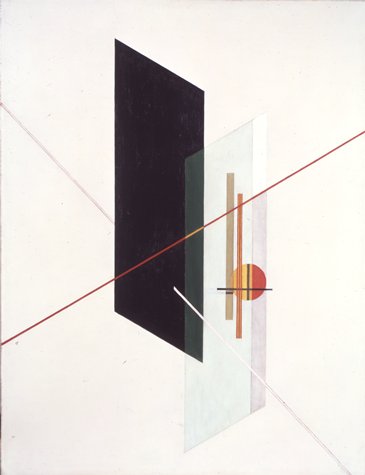
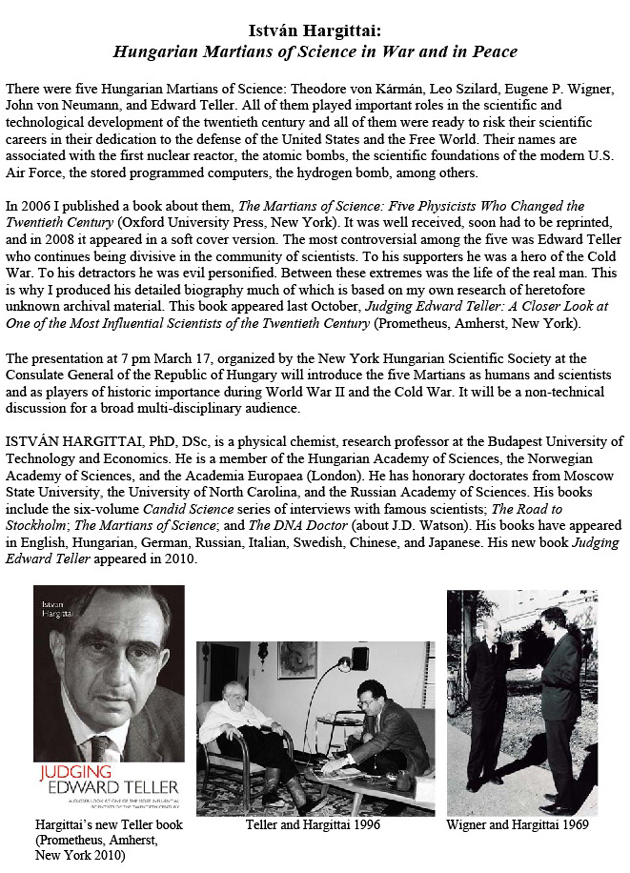
"In the Whirl of Cultural Changes -
Hungary between 1711 and 1848."
Gábor Vermes előadása - 2011 február 24.
About the speaker
I left Hungary in 1956 as a recent graduate of the Eötvös Loránd University. My field then was geology.
After several months of camp-life in Austria, I arrived to the United States in 1957. I worked as a geologist in oil-exploration in Texas, Luisiana, New Mexico, Utah and Wyoming. It was in Luisiana that I realized that notwithstanding the fact that I had a very interesting life, I was in a profession that did not suit me. I always wanted to become a historian, but in Stalinist times the humanities were so distorted that I rather chose a career in a natural science. However, once I was in America I could follow my heart's desire. I started to apply to universities and was very fortunate in having been accepted by Stanford University in California. I started my new university studies at Stanford in history in October, 1958. I received my Master's Degree in 1961 and my Ph.D. in 1966.
After temporary teaching jobs and scholarships (to Austria for a year), I became employed by the Newark Campus of Rutgers University in 1972; I retired as professor emeritus in 2001.
My research field has been Hungarian history. In addition to articles and book reviews, my major work so far is the biography of Count Istvan Tisza, which attempts to offer a portrait and analysis of his period as well. It was published in 1985 in the East European Monograph Series and distributed by Columbia University Press. Agnes Deak, an outstanding Hungarian historian translated it, and Osiris-Kiado published it in two editions, in 1994 and in 2001.
Currently, the title of my manuscript is: "In the Whirl of Cultural Changes: Hungary between 1711 and 1848." I have a contract with the Balassi Kiadó of Budapest, and if all goes well, it will be published in Hungarian translation by Hungarian Book Week in June, 2011.
Gabor Vermes
The life and works of János Bolyai and his impact on the history of culture
Prékopa András előadása - 2010 november 3.
János Bolyai (1802-1860), the world famous mathematician, is the greatest figure in Hungarian Science. On November 3, 1823 he wrote to his father: out of nothing I have created a new, different world. The date marks the discovery of non-Euclidean geometry that changed the course of mathematics, opened the way for the modern physical theories of the 20th century and changed our way of thinking. The speaker will tell, in simple terms, the fascinating story of this discovery, the extraordinary life of János Bolyai and how he influenced the history of human culture.
About the speaker:
András Prékopa is professor of operations research, mathematics and statistics at Rutgers University. He is also emeritus professor of L. Eötvös University of Budapest. He received Ph.D. from Eötvös University in 1960, is a member of the Hungarian Academy of Sciences, the New York Academy of Sciences and other academies and professional societies. His main scientific interests are: probability theory, optimization, convex geometry, history of mathematics, applications of mathematics in engineering, economics and other fields. He is recipient of the Széchenyi prize (1996), the middle cross (2005), from the Hungarian Government and the Gold Medal from the European Operational Research Societies (2003). He is married to Kinga Széchenyi, writer and sculptor, they have two children and two grandchildren.
On November 24, 2009 two American scientists were awarded the honorary membership of the Hungarian Academy of Sciences at a well-received event which was organized by the Consulate General of Hungary and the Rockefeller University in New York. Nearly 50 professors and scientists of Hungarian origin from the New York area participated in the ceremony. Many of them met for the first time at the event and had been unaware of their colleagues’ Hungarian descent.
These highly qualified scientists, internationally recognized academics and researchers of Hungarian origin follow in the footsteps of world-renowned scientist, such as János Neumann, Ede Teller, Jenő Wigner, Tódor Kármán and Albert Szentgyörgyi and continue the impressive Hungarian contribution to scientific life in the US. Today´s Hungarian-American scientists and researchers are proud heirs to their great predecessors.
During the official visit of Pál Schmitt, the President of the Republic of Hungary to New York on September 19-24, 2010, the Consulate General suggested that the Hungarian President meet with the Hungarian scientists and university professors living and working in the New York area.
At the Consulate General’s event in New York held on September 23, 2010, President Pál Schmitt suggested that the scientists present should establish a Hungarian Scientific Society, and offered his knowledge, experience and the support of the motherland to this endevour.
The resulting nation-wide initiative will be called the Hungarian Scientific Society of New York and will be hosted in the future by the Consulate General in New York. The society will further the regular meetings and cooperation of the scientists of Hungarian origin. On account of the regular dialogue, the Consulate General in New York and the Hungarian community could mutually benefit from the prominent scientific lectures held at the Consulate General.
We hope that you attend the first program of the Hungarian Scientific Society of New York. The inaugural lecture will be on the topic of “The life and works of János Bolyai and his impact on the history of culture” and will be held by Professor András Prékopa.
